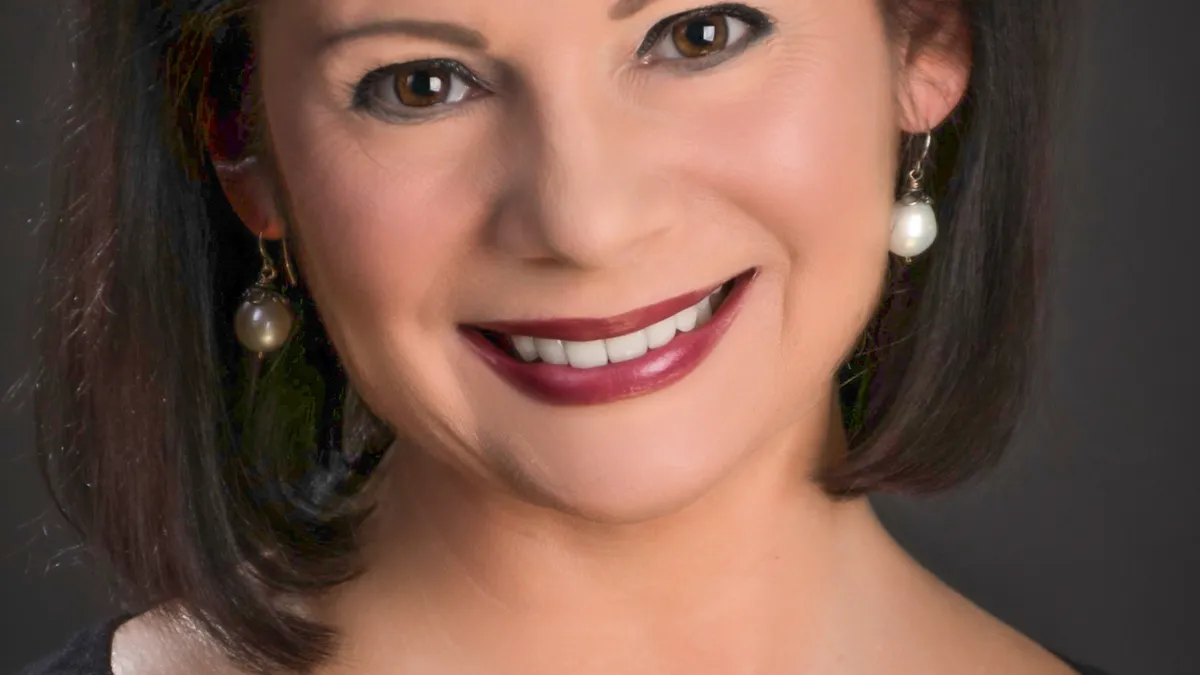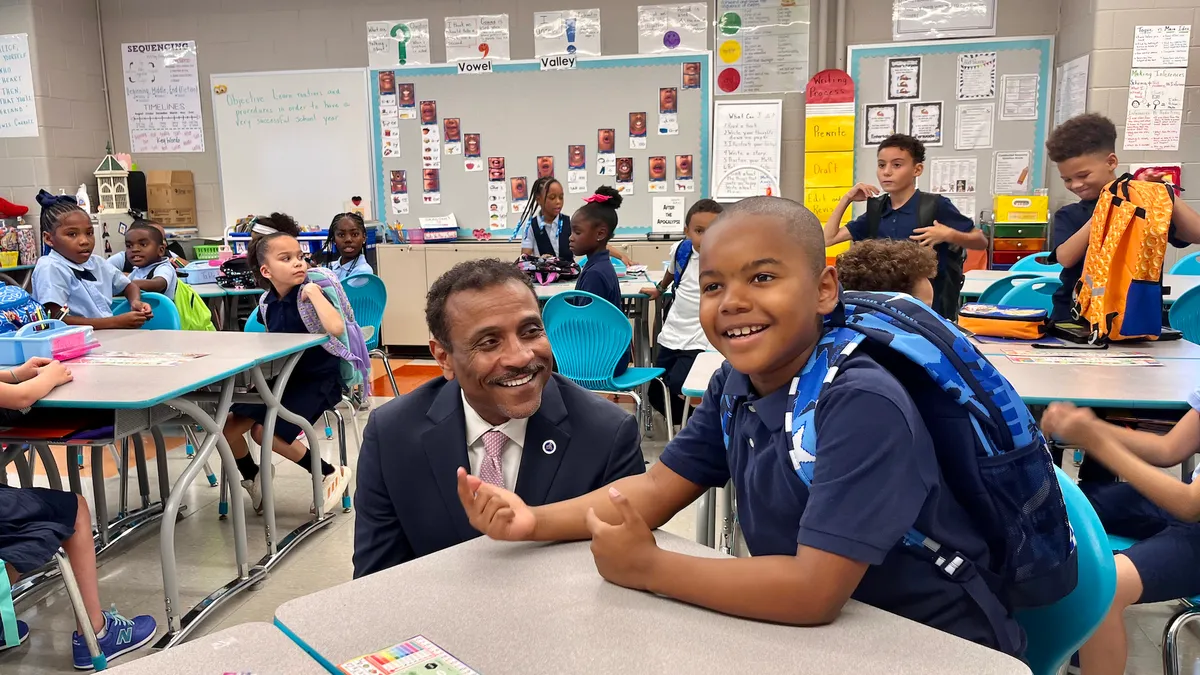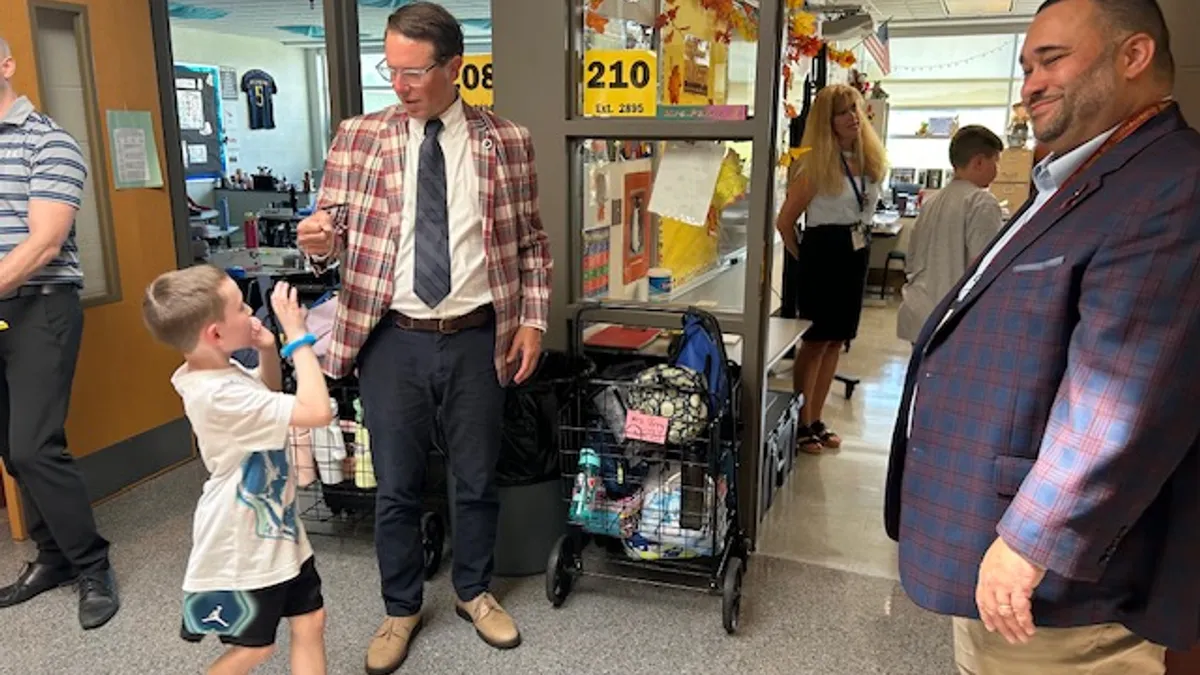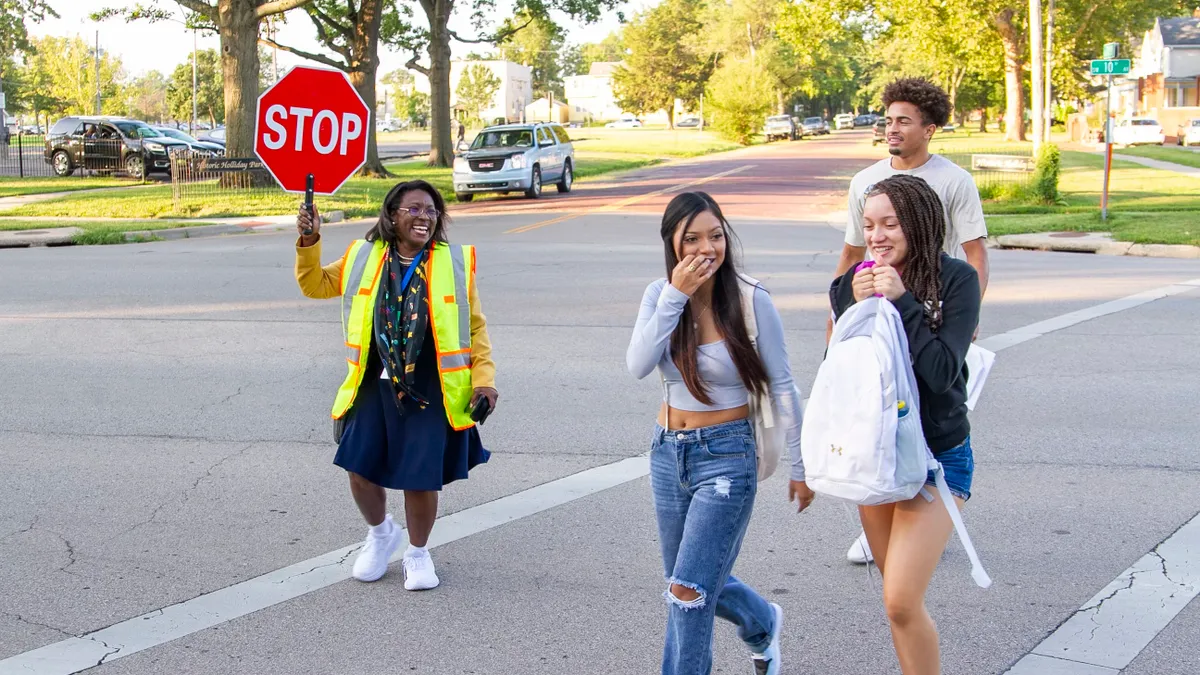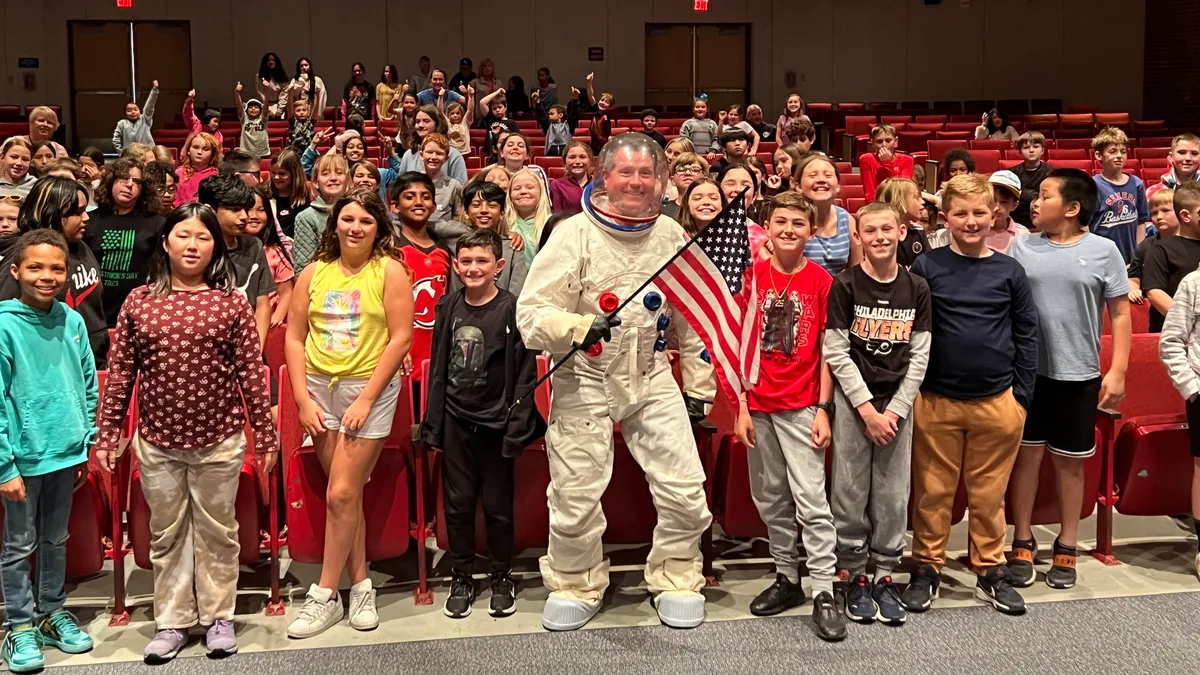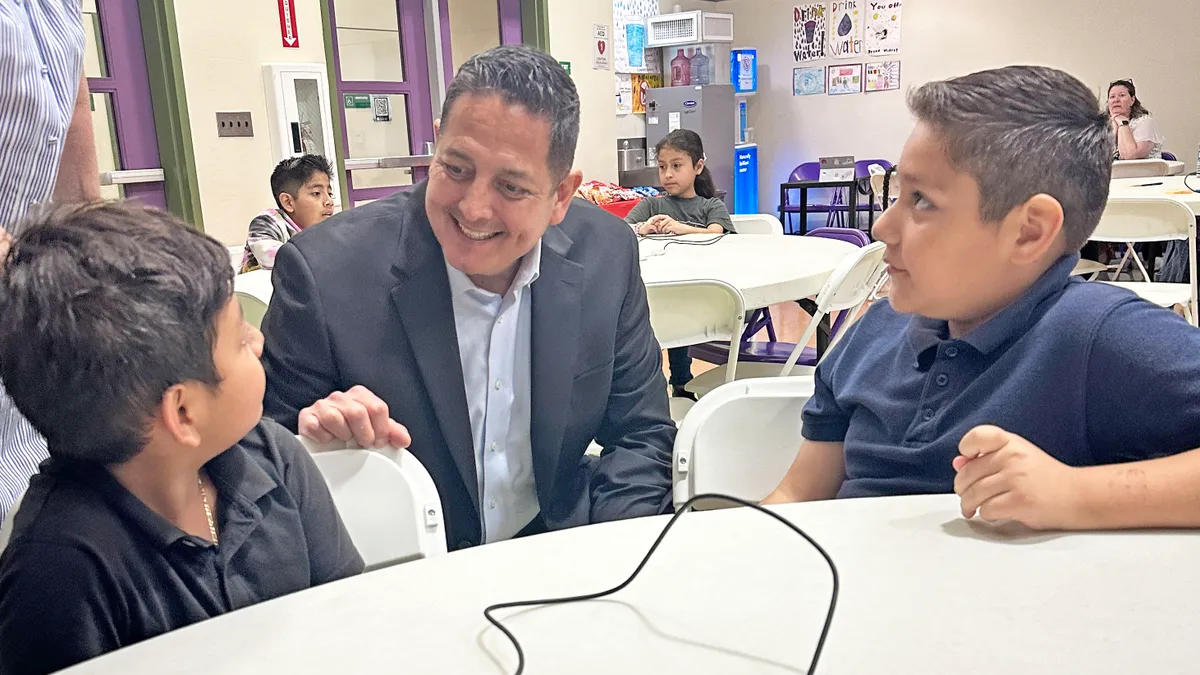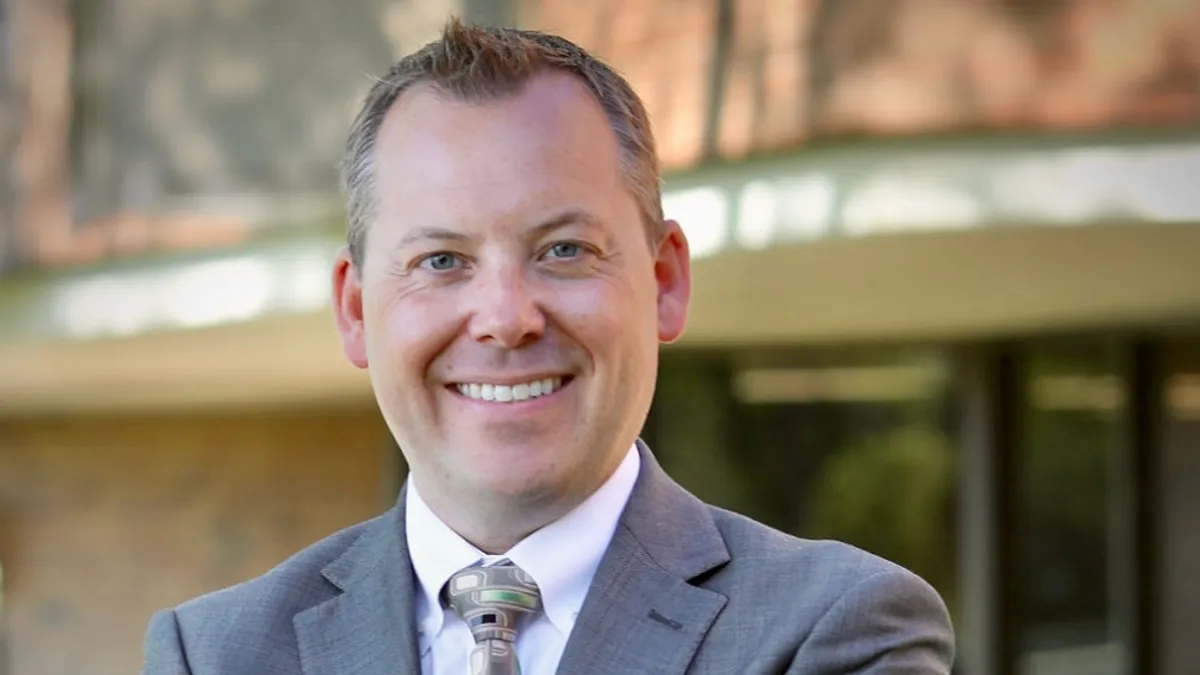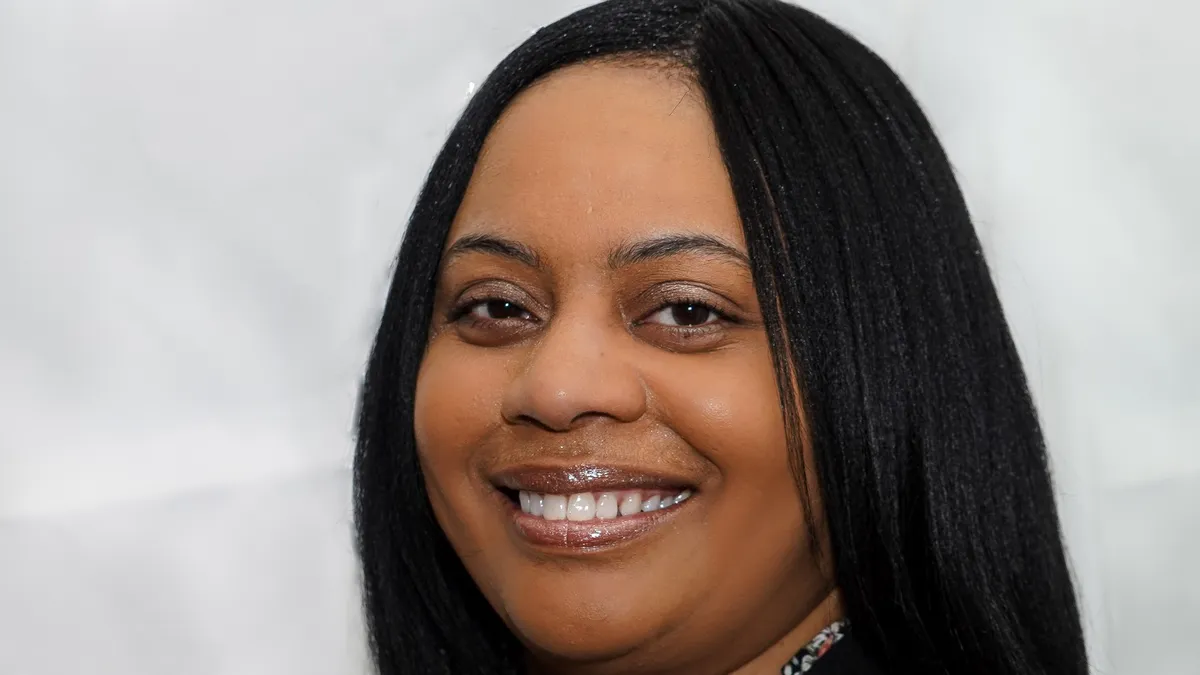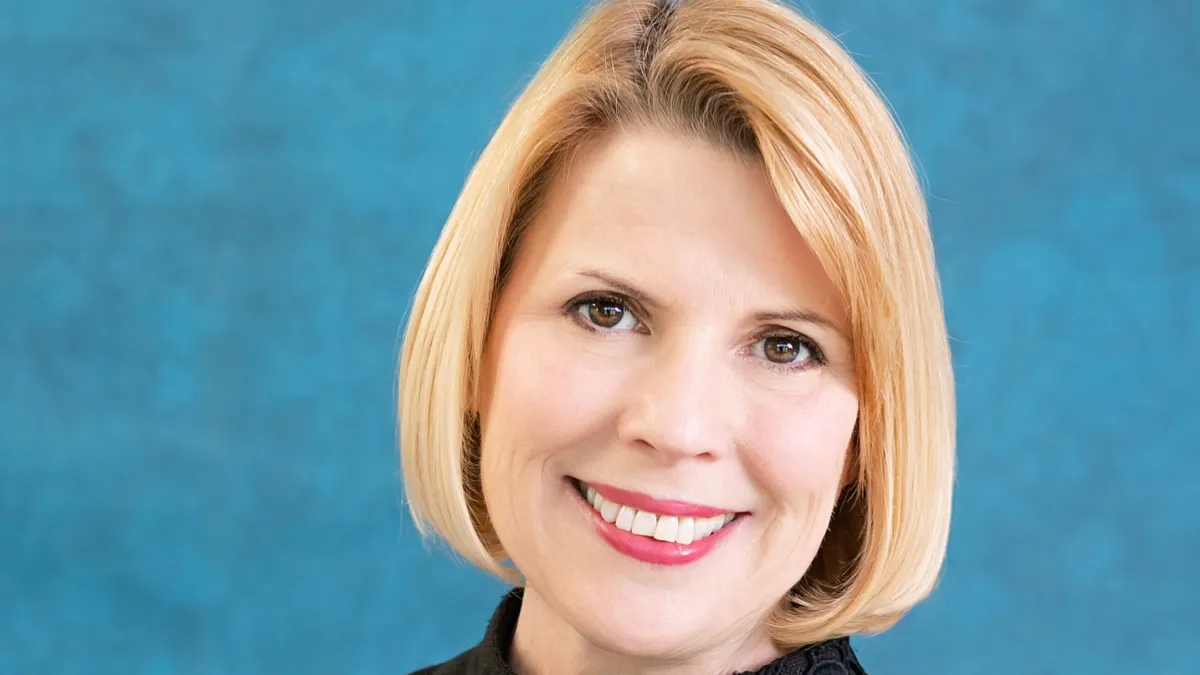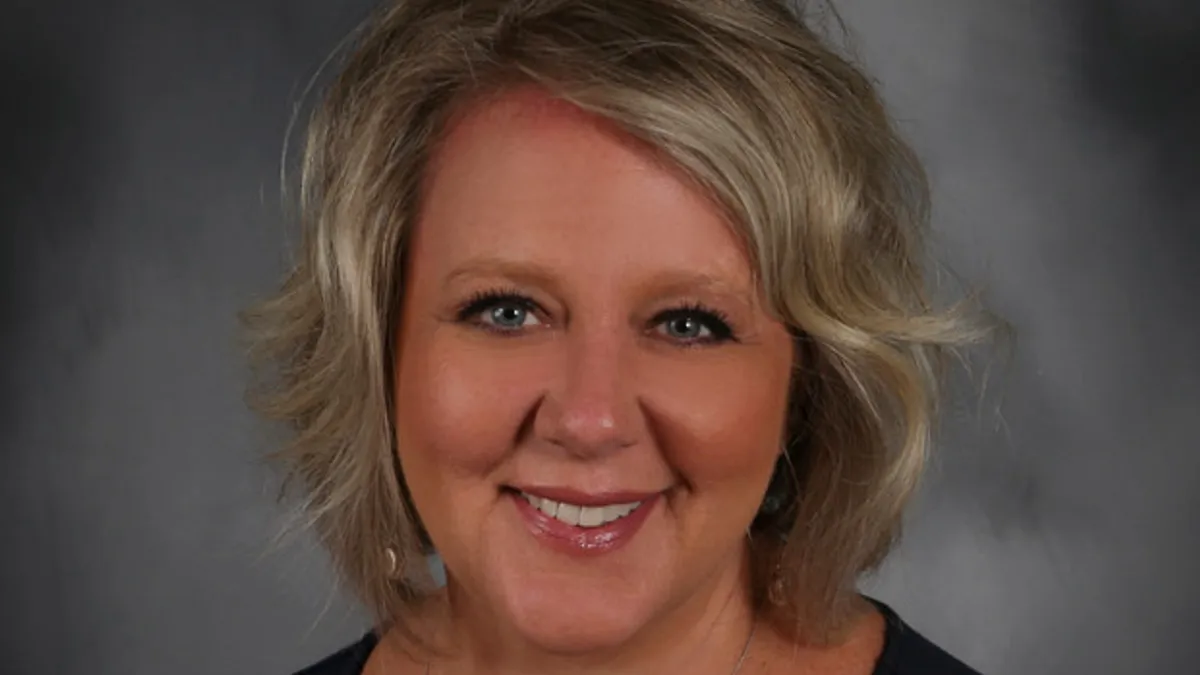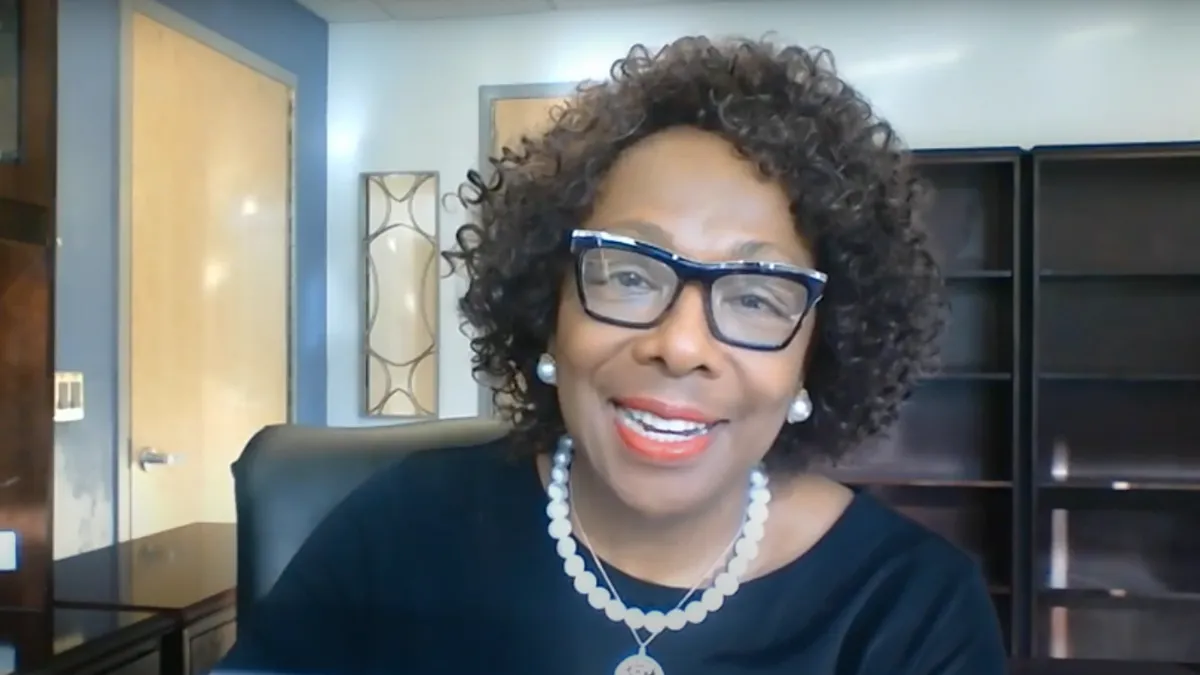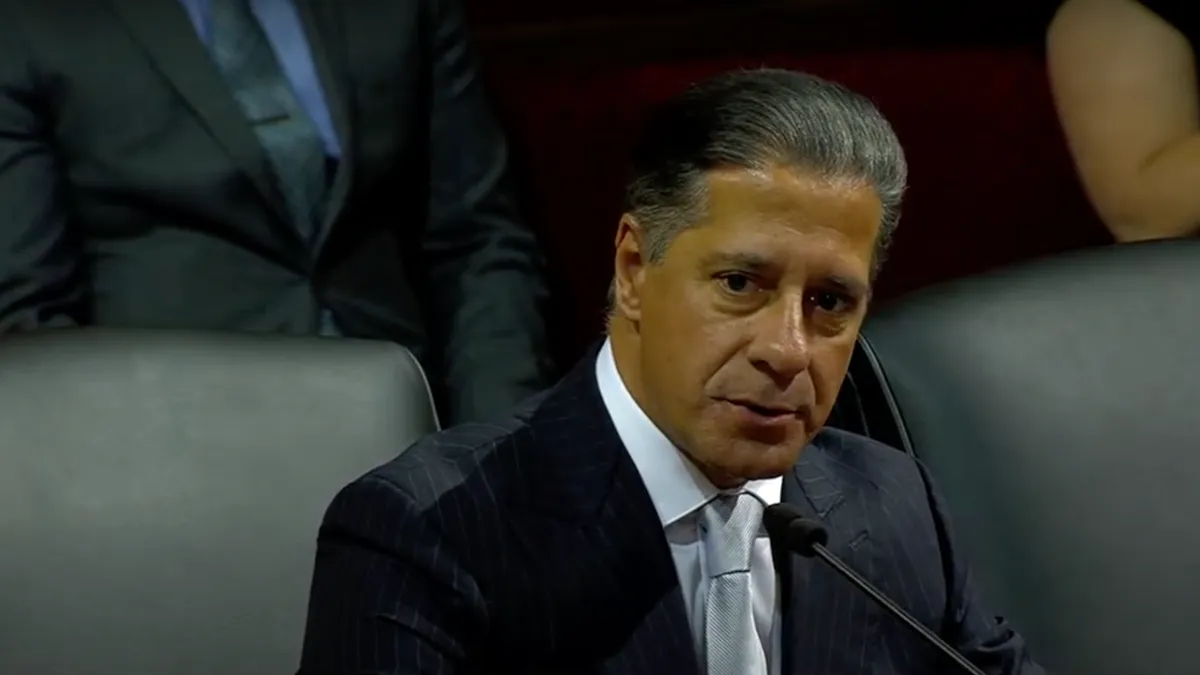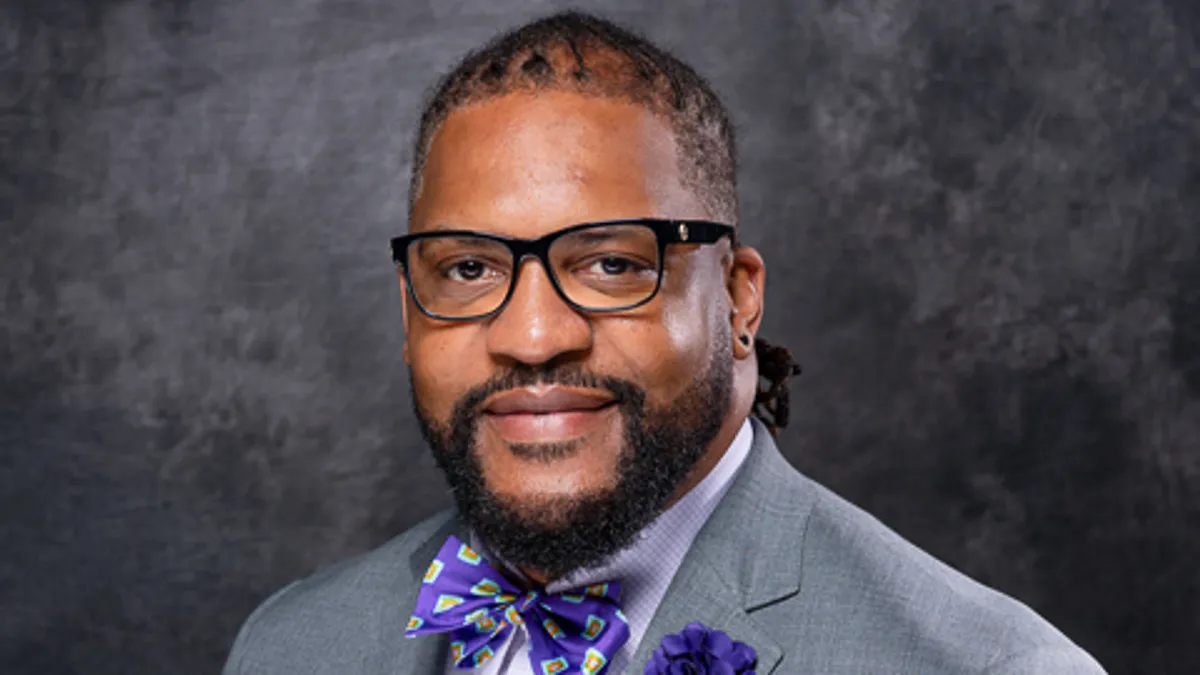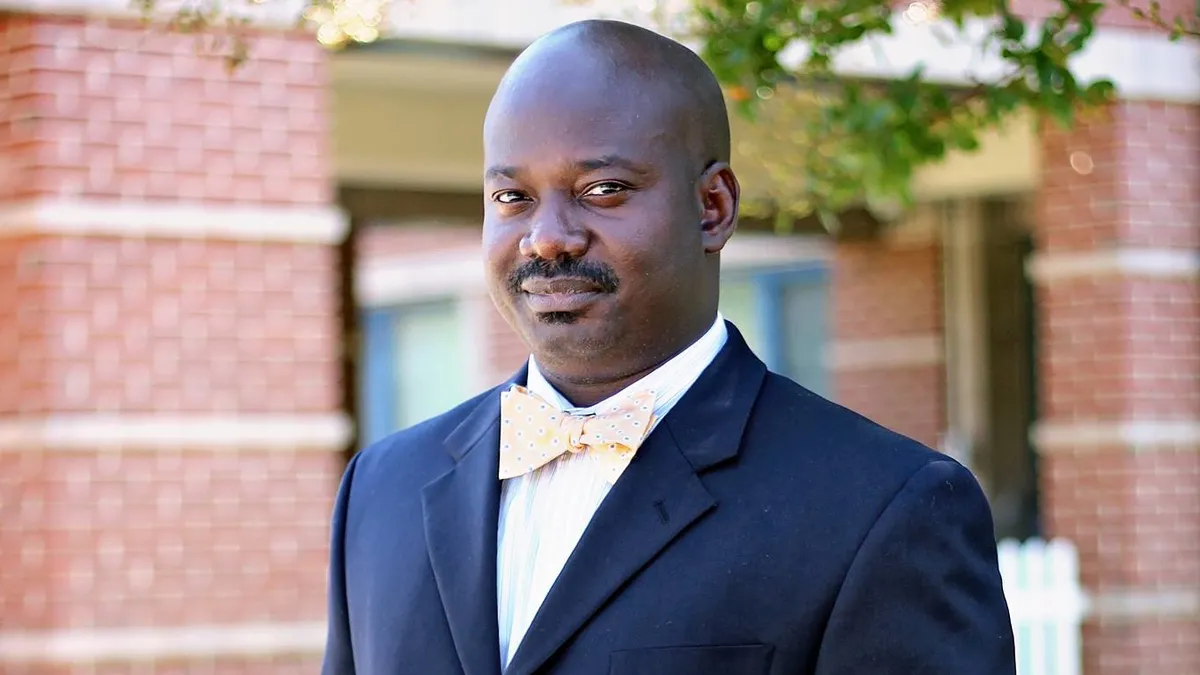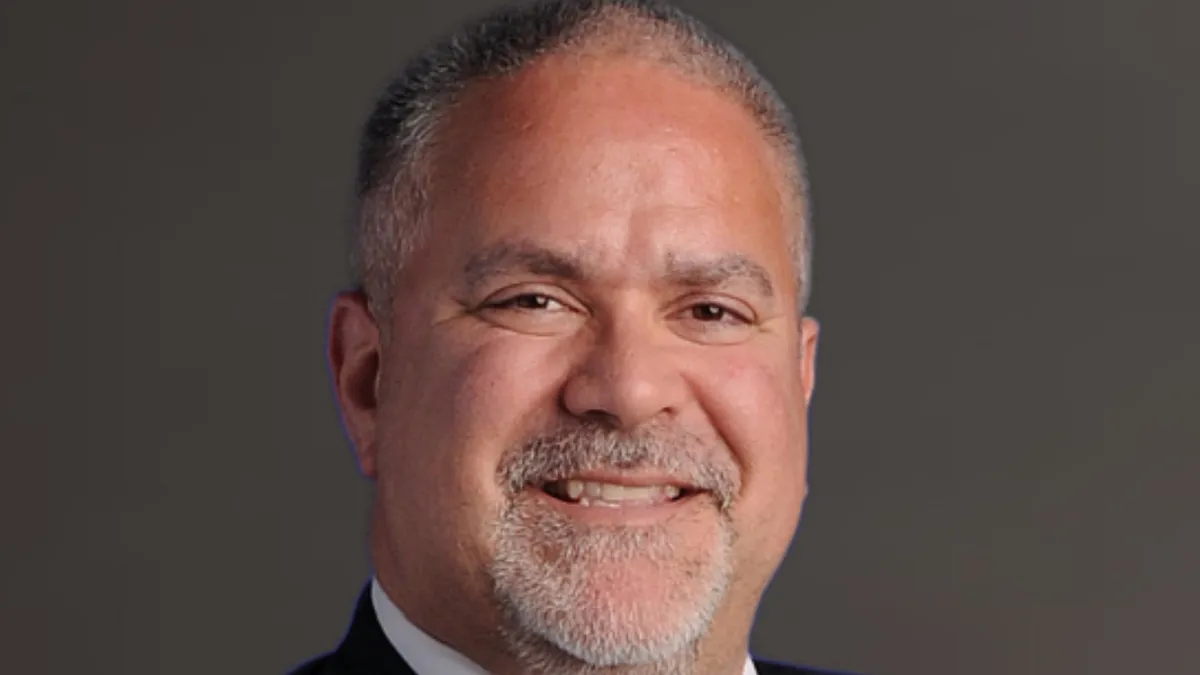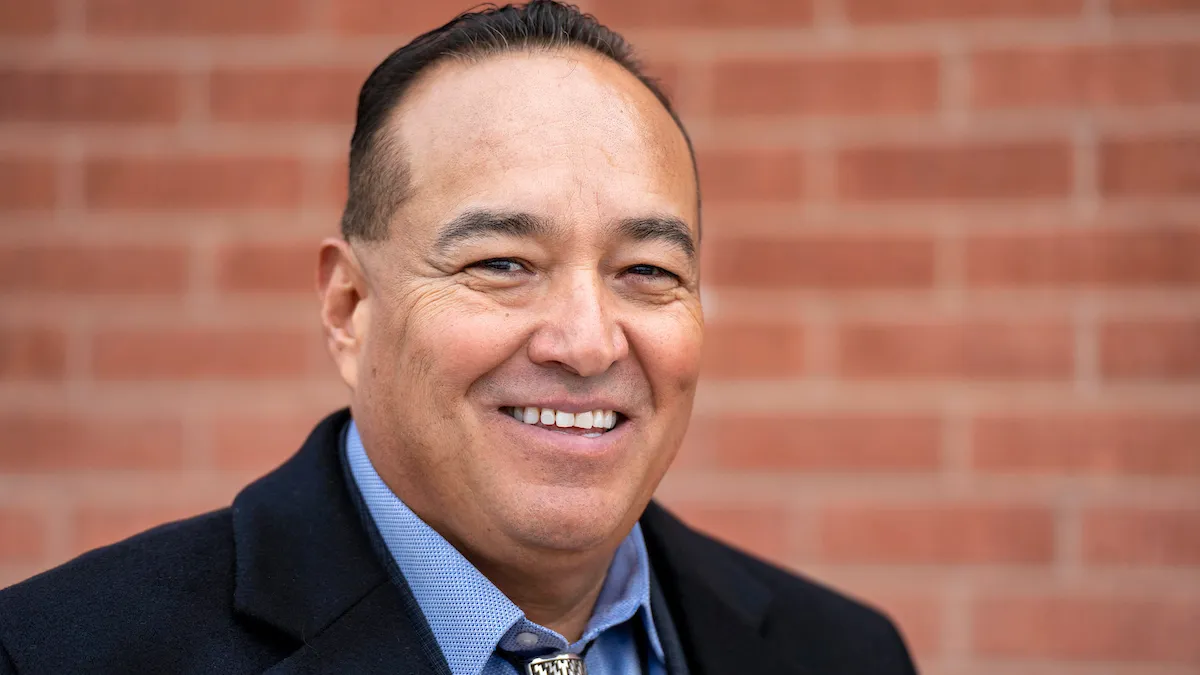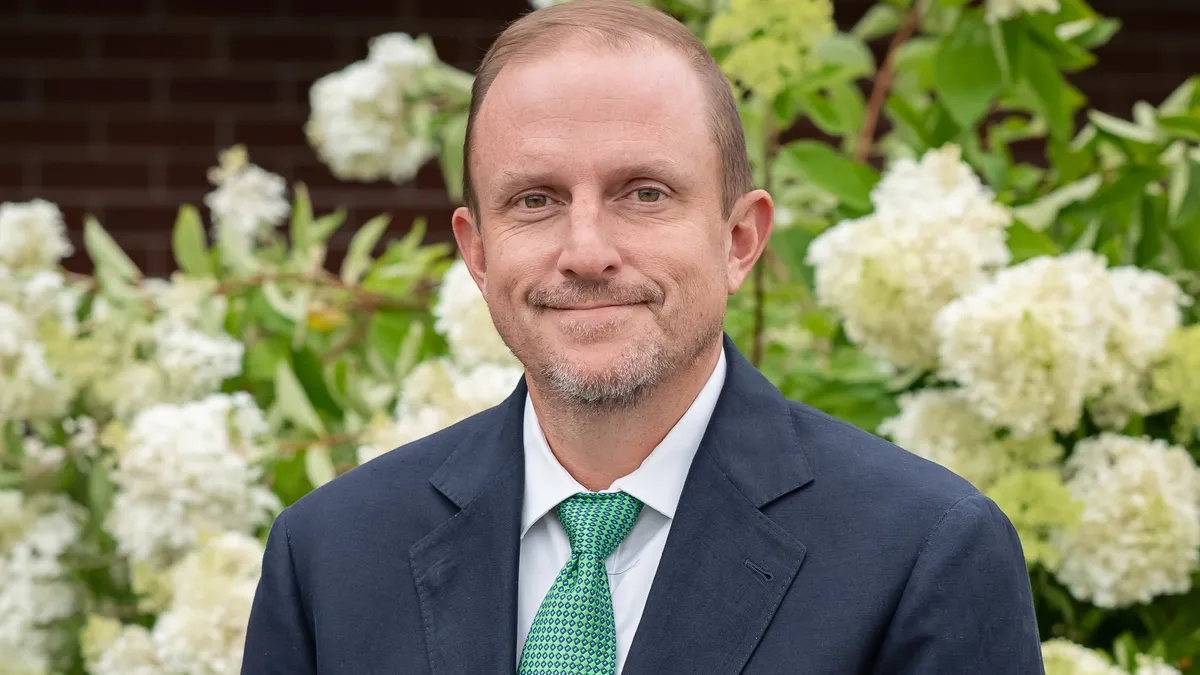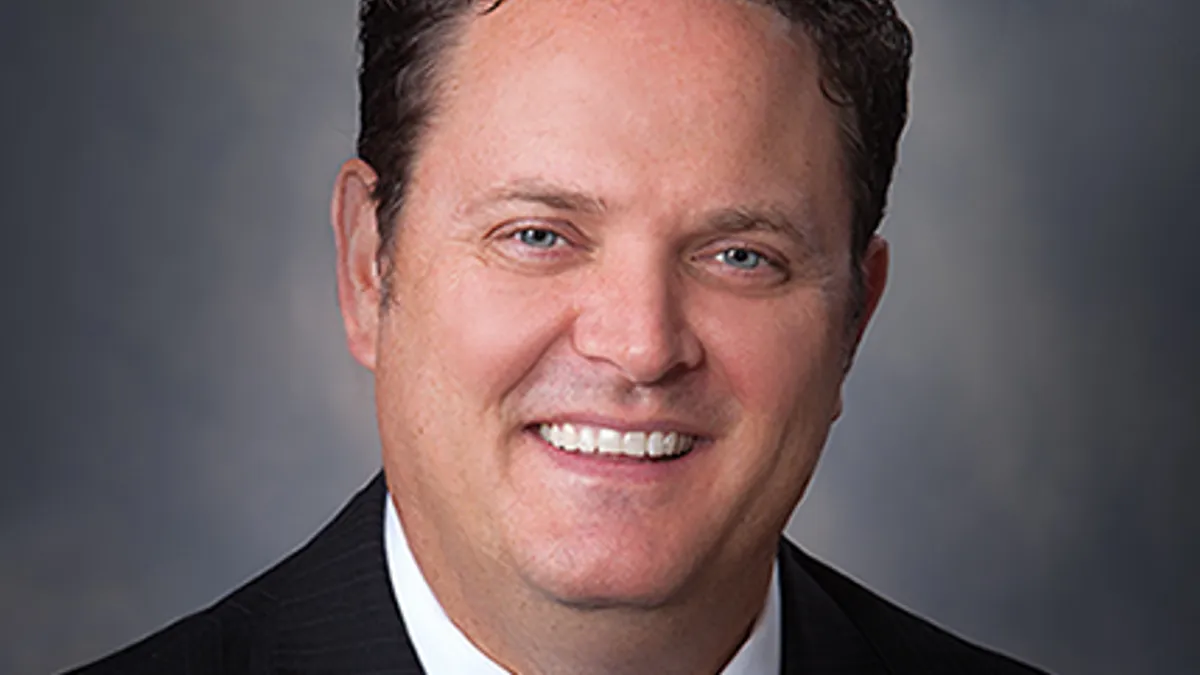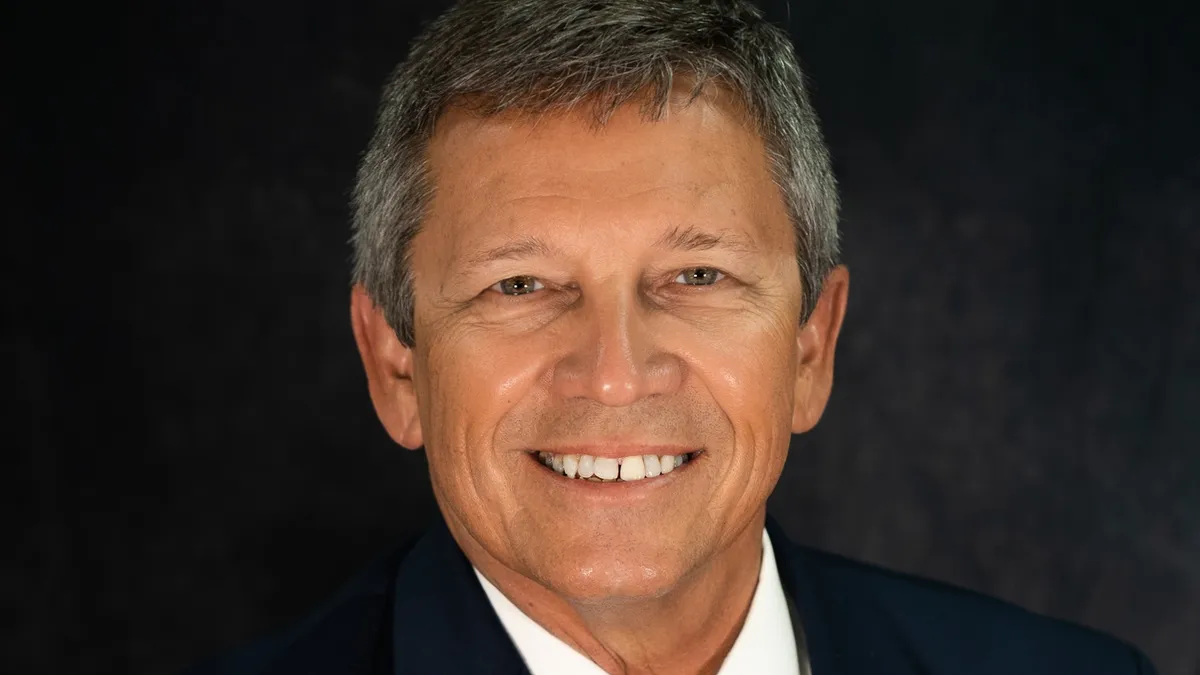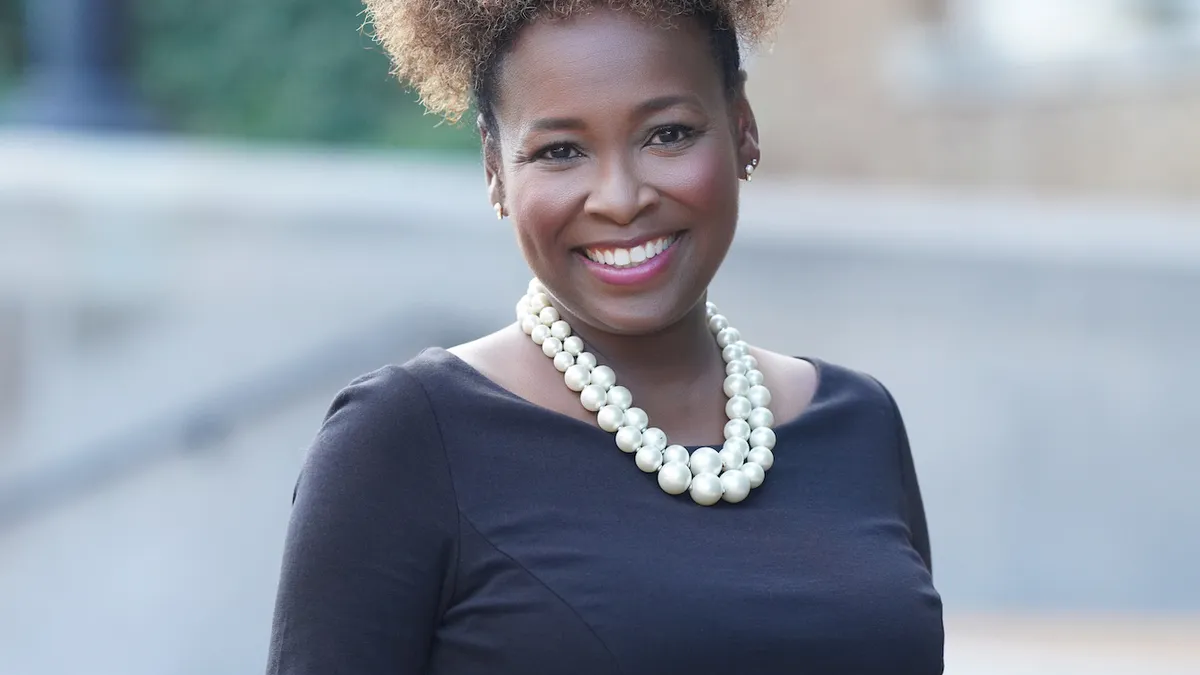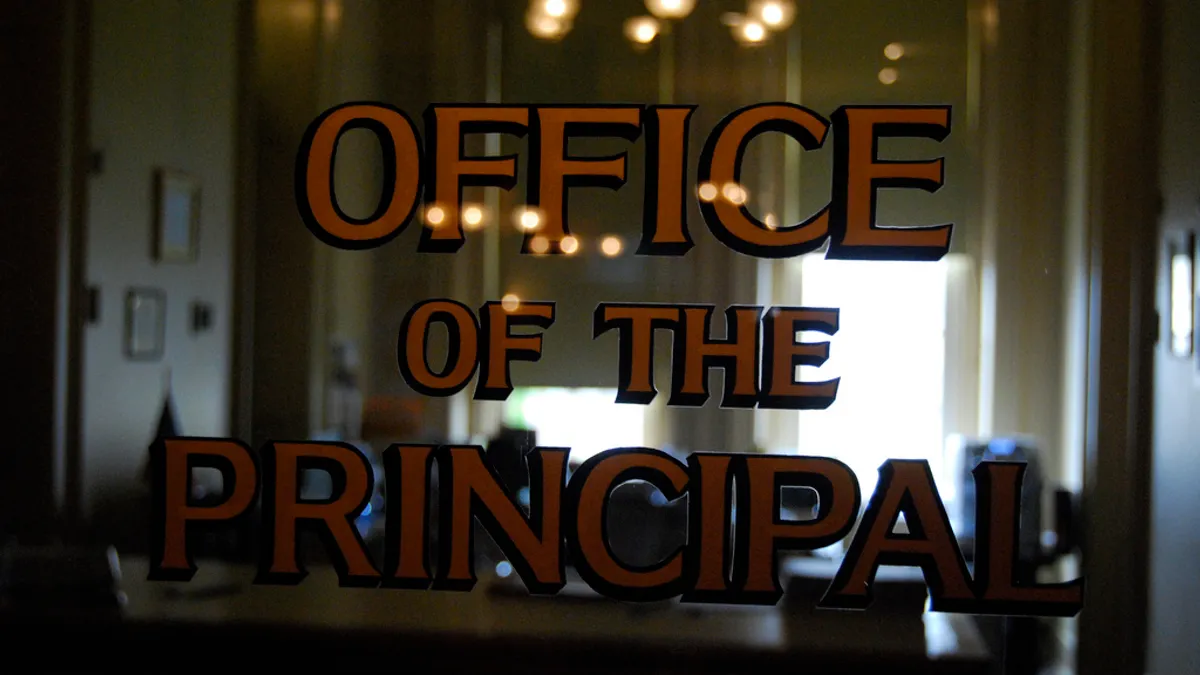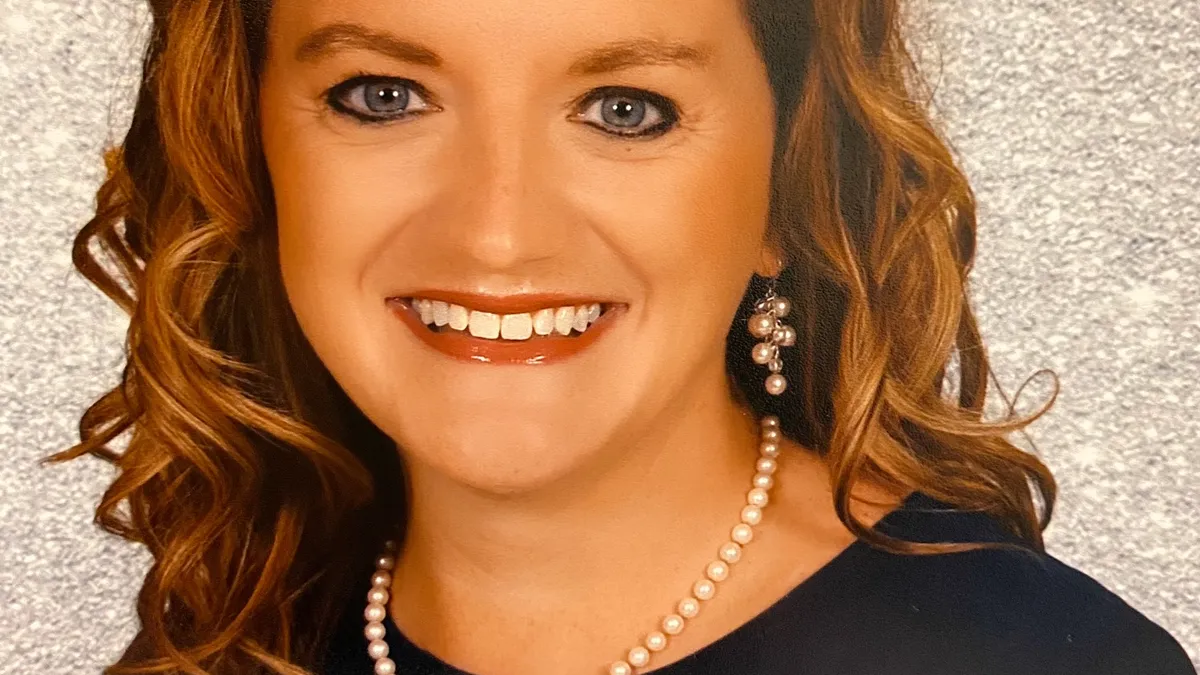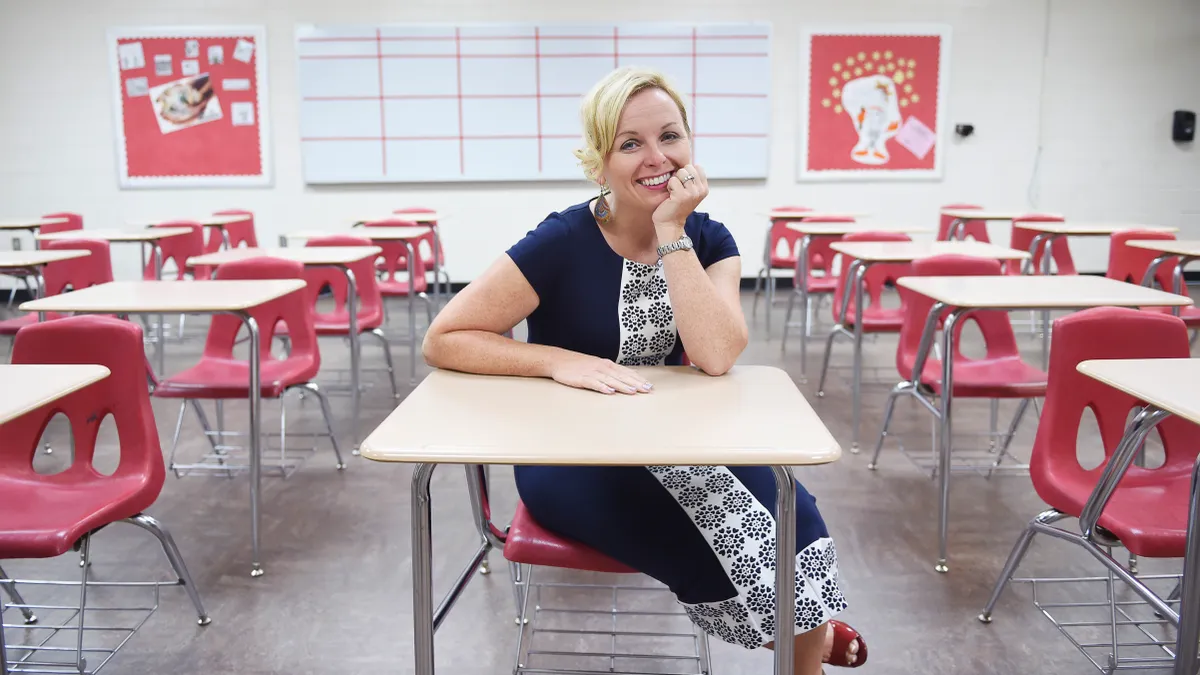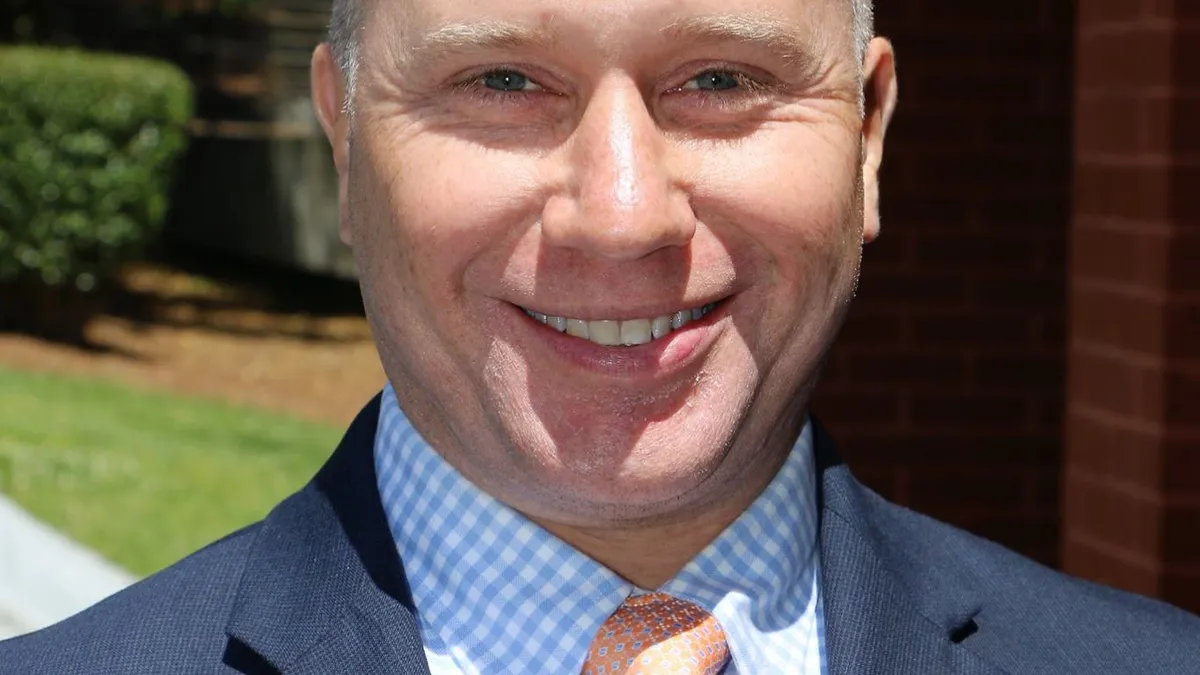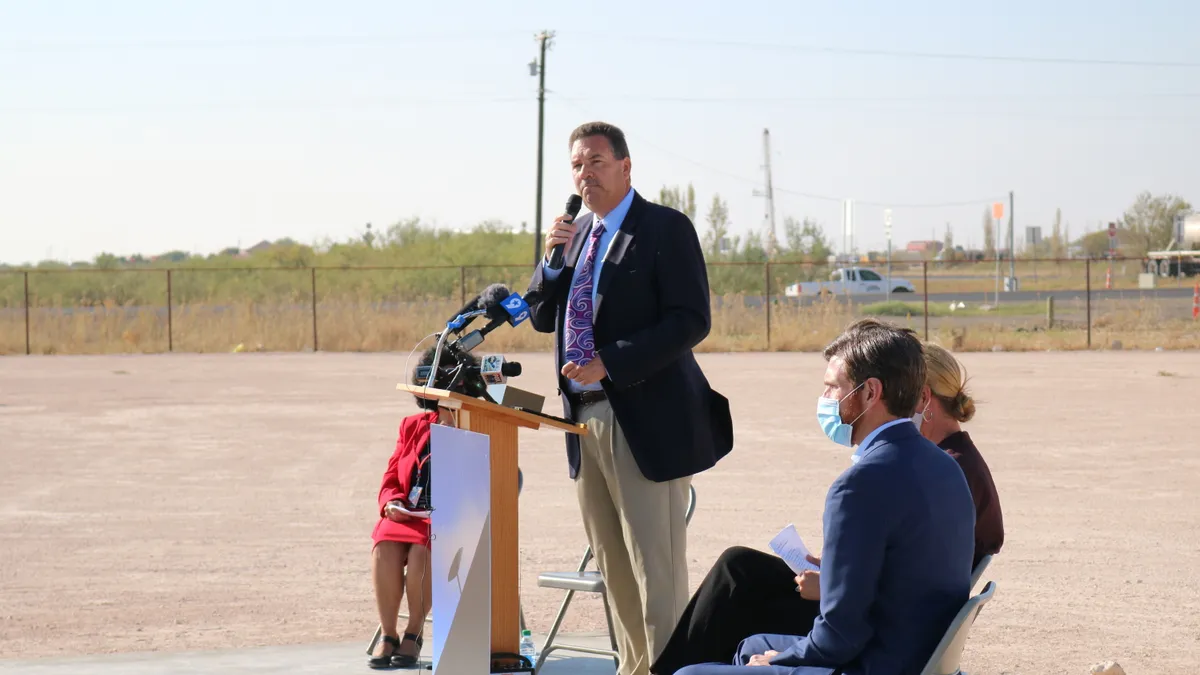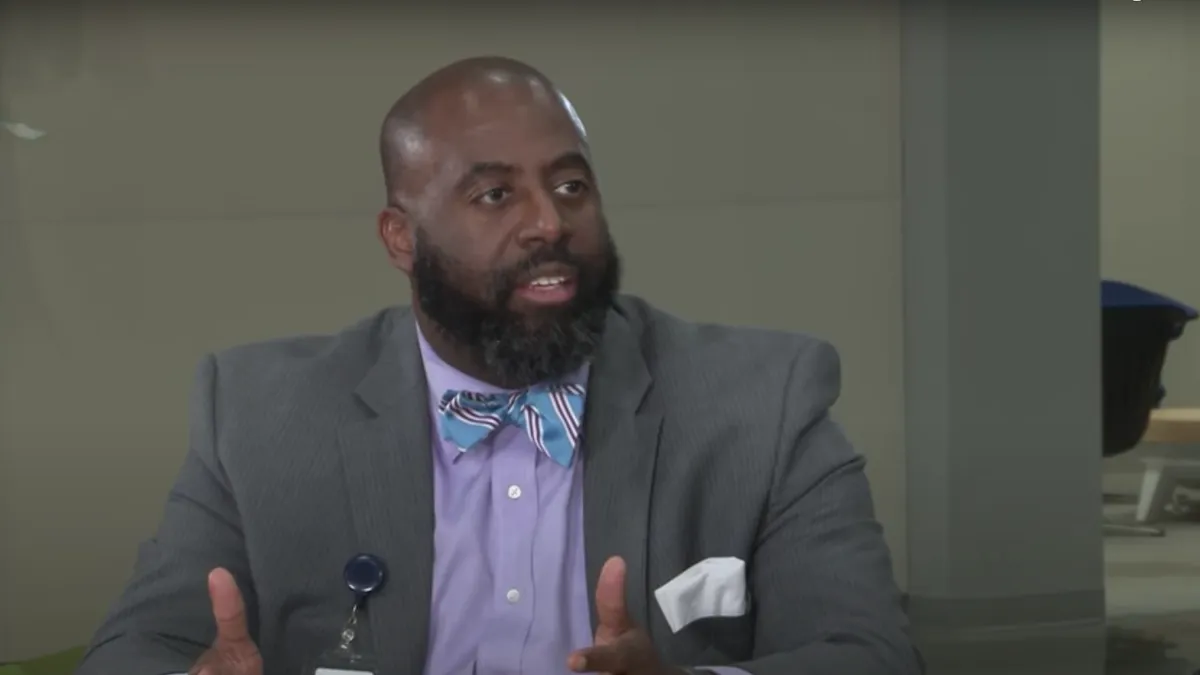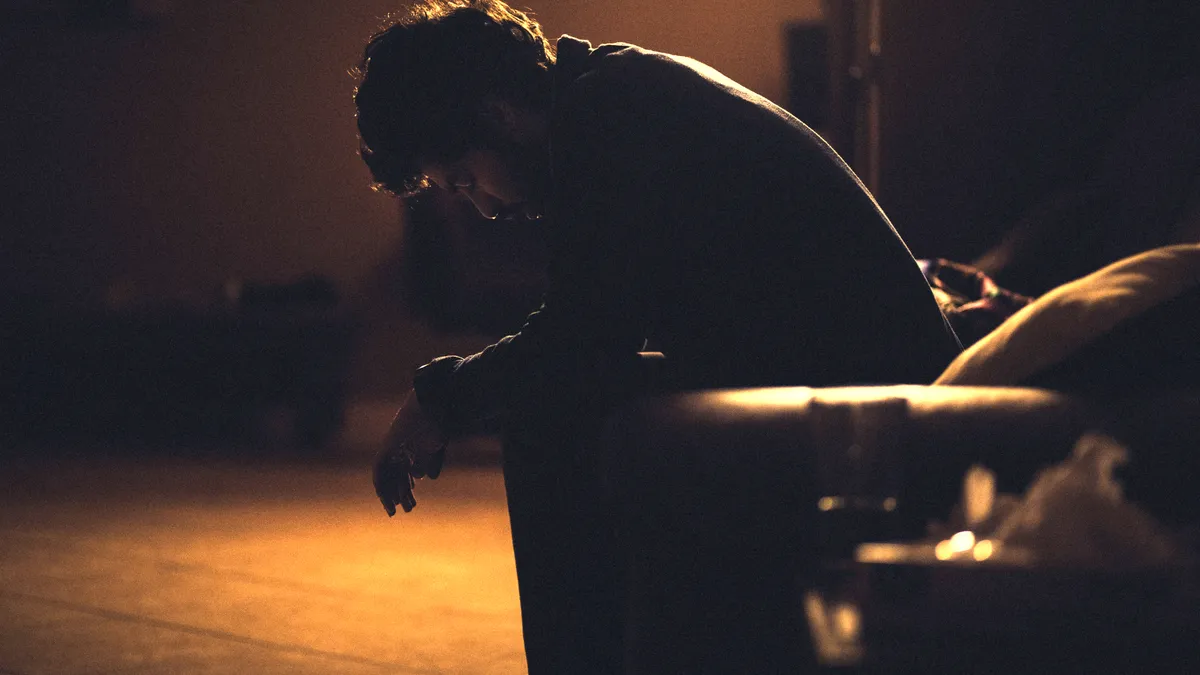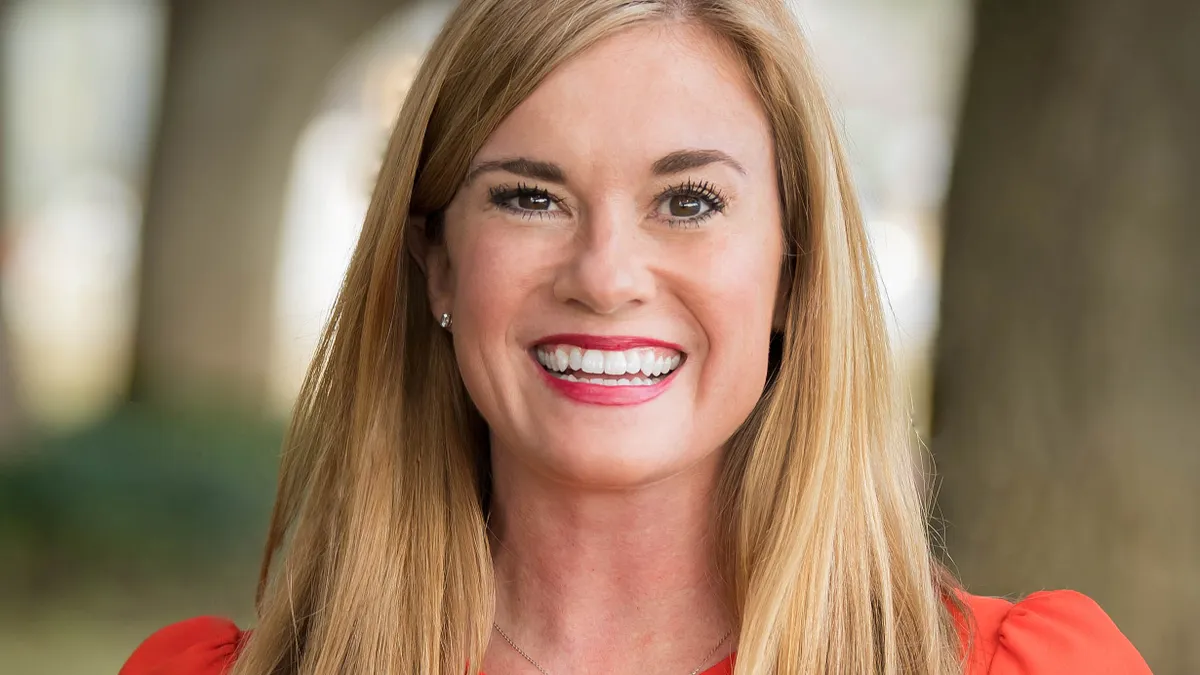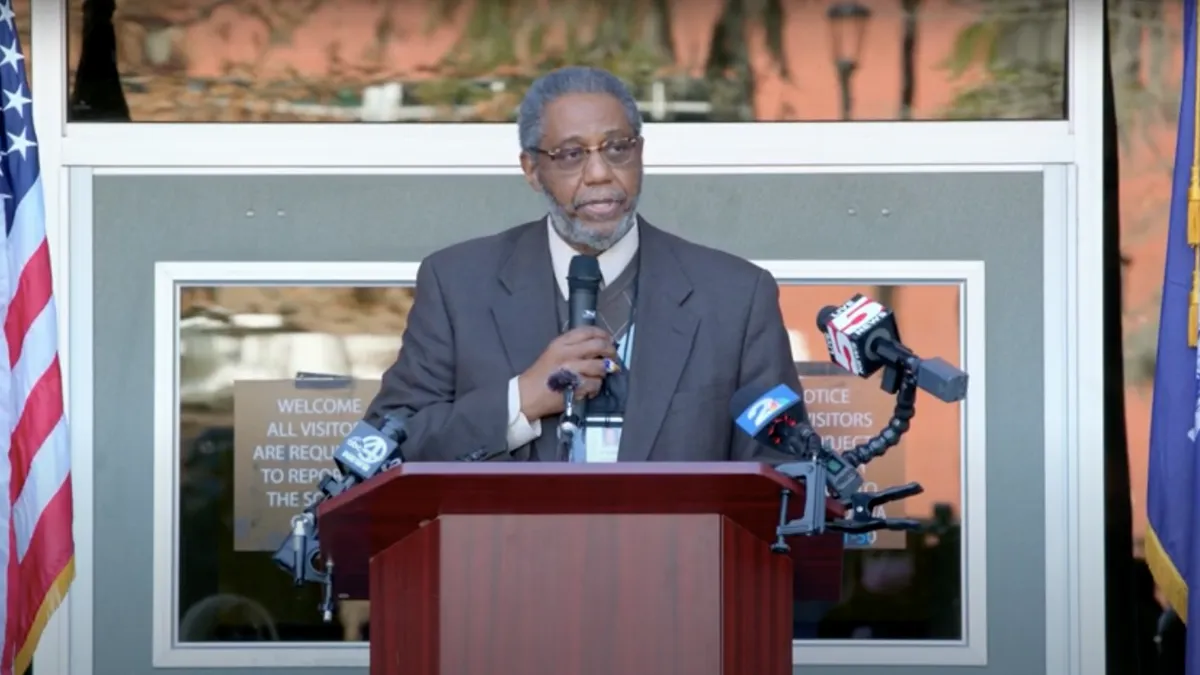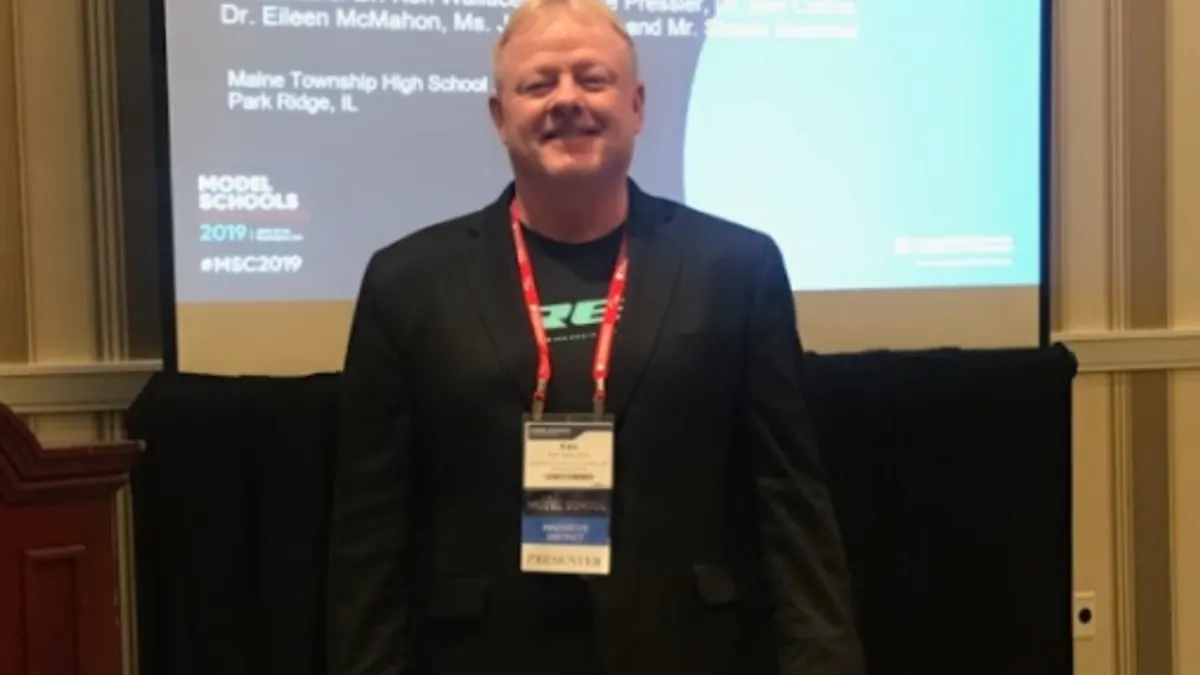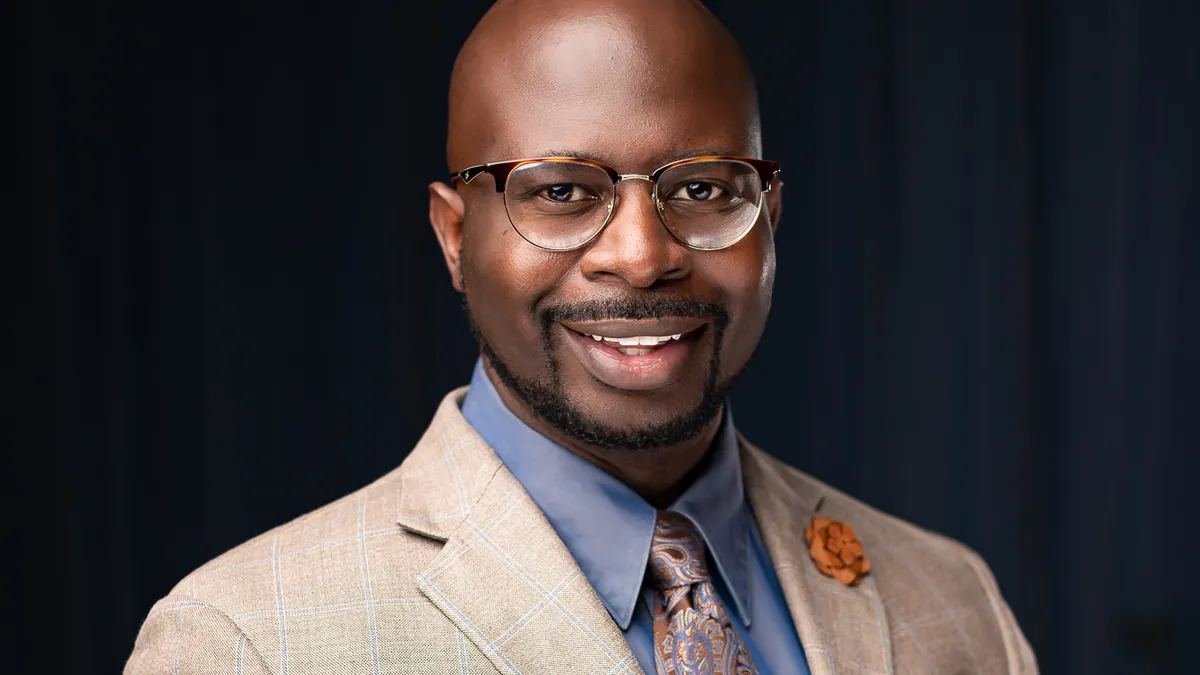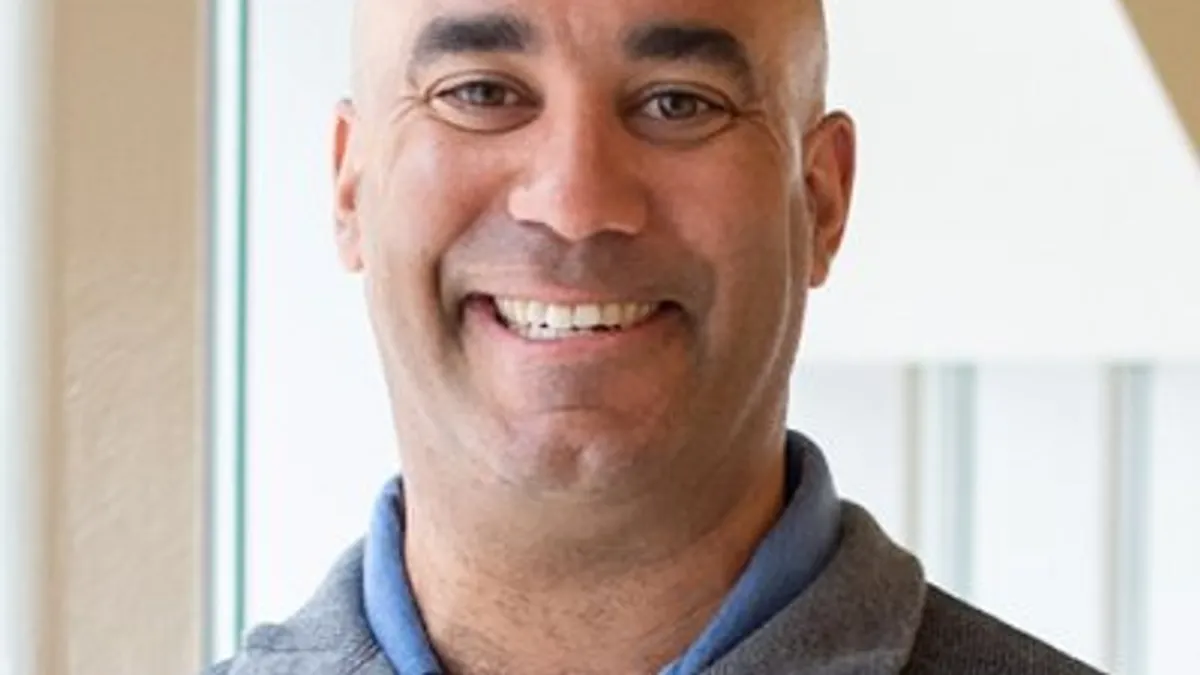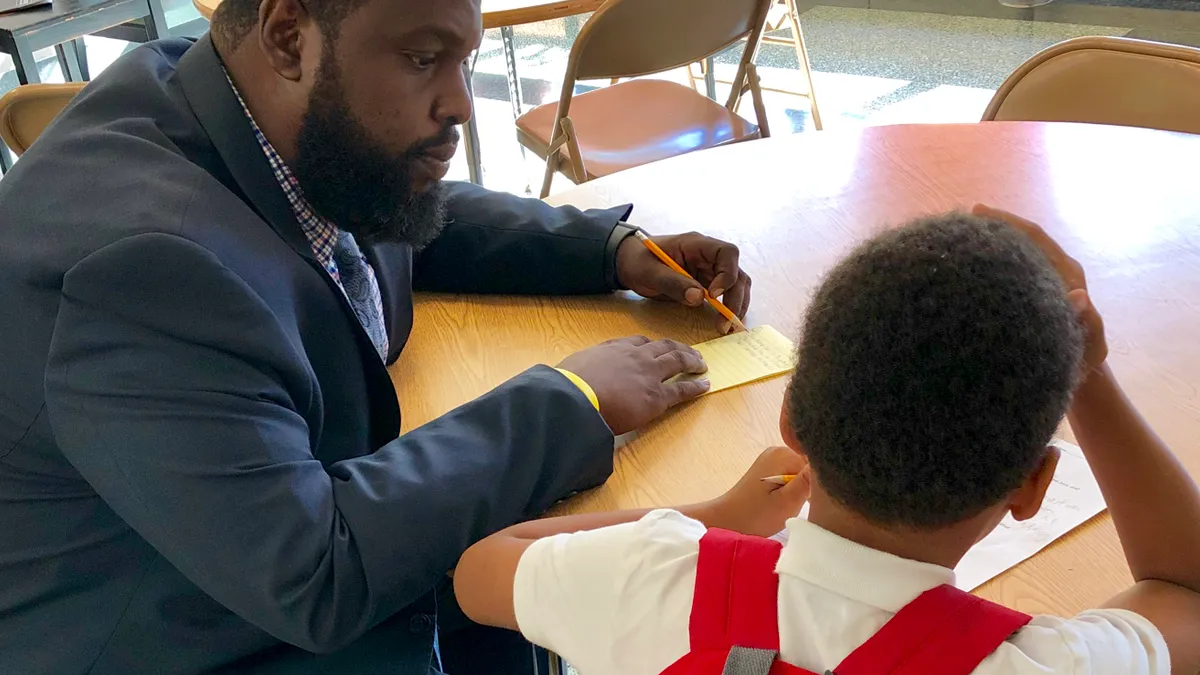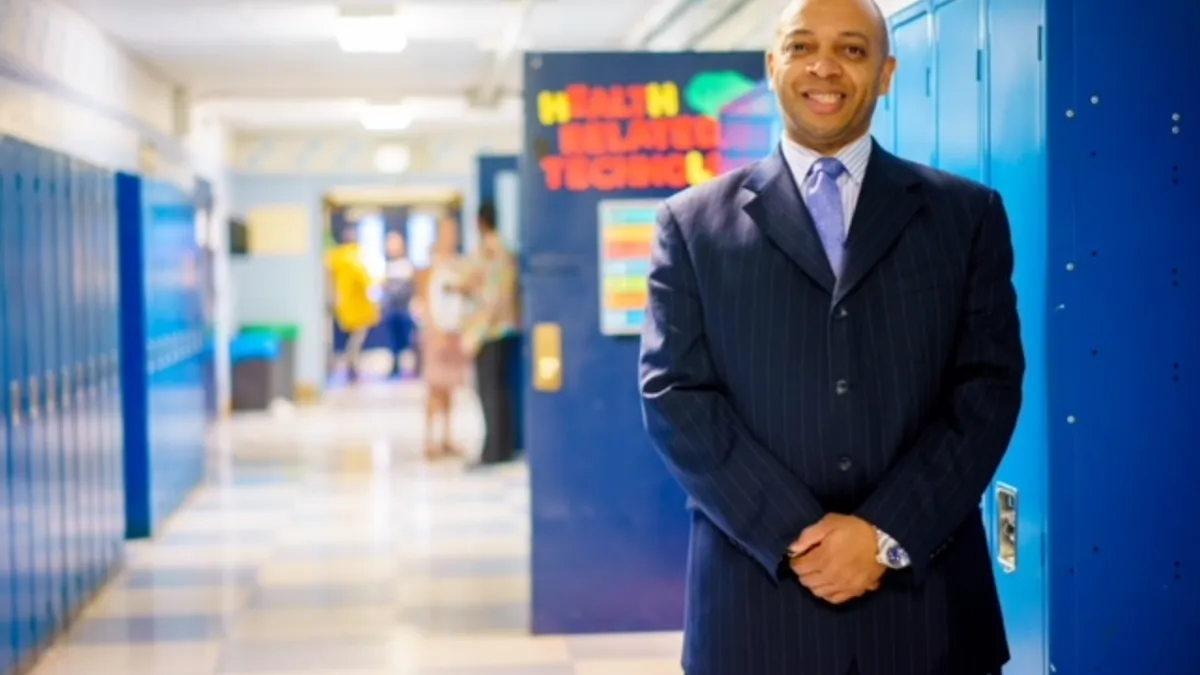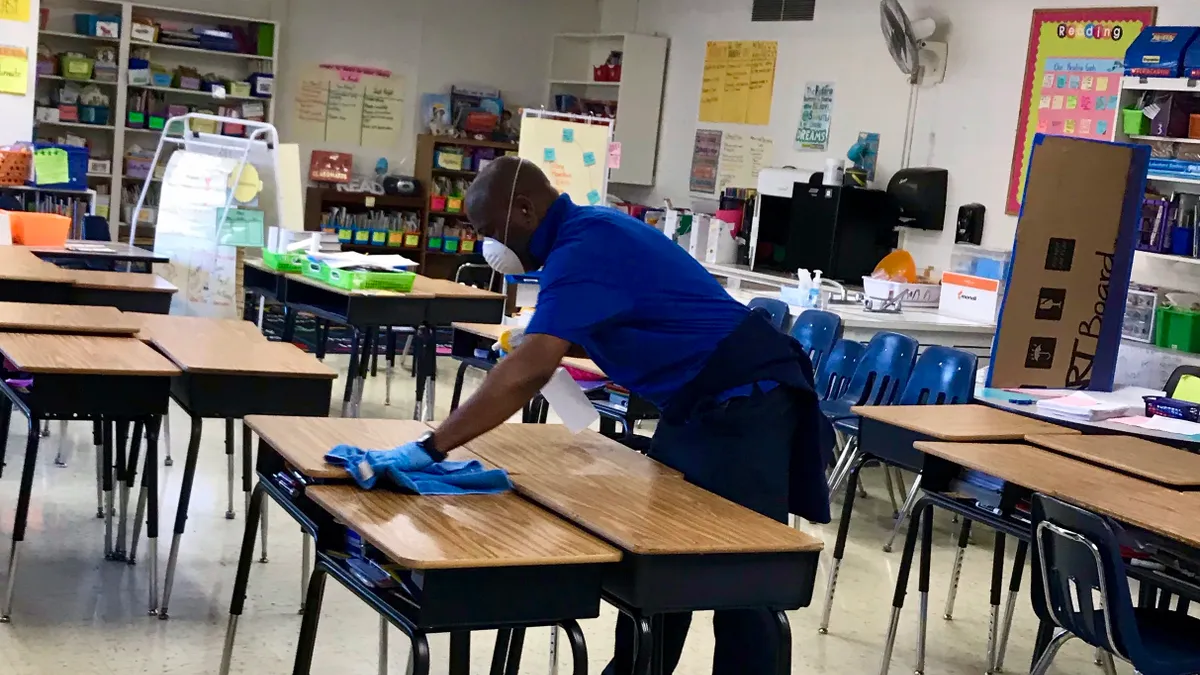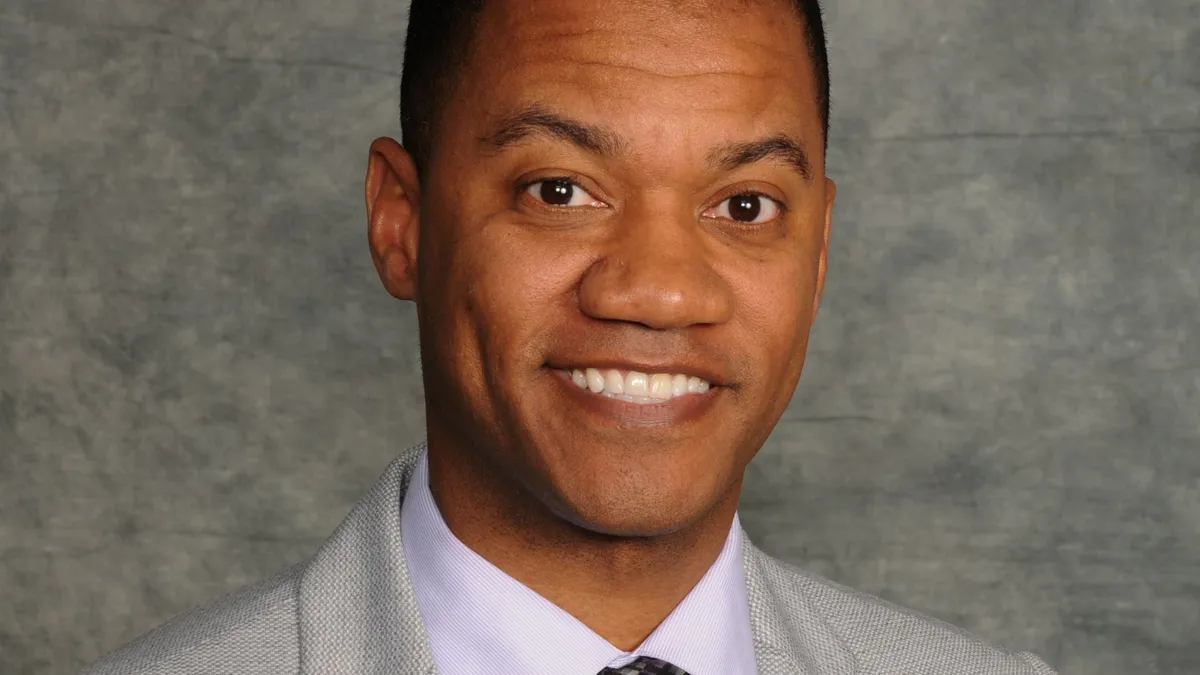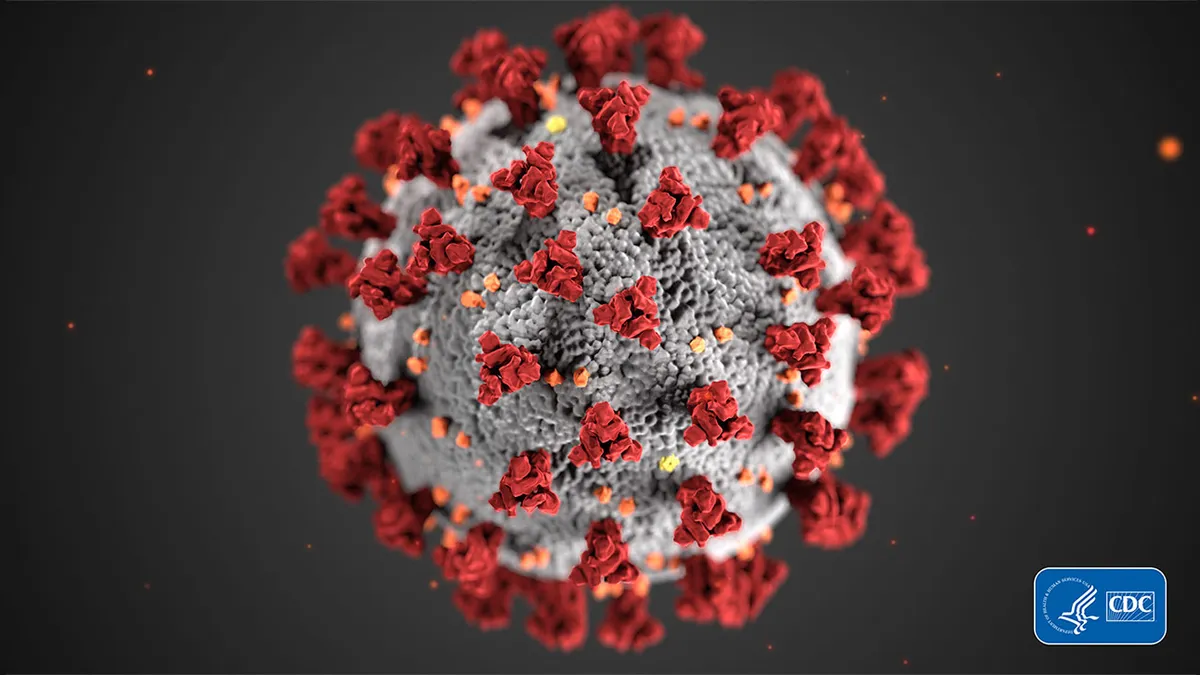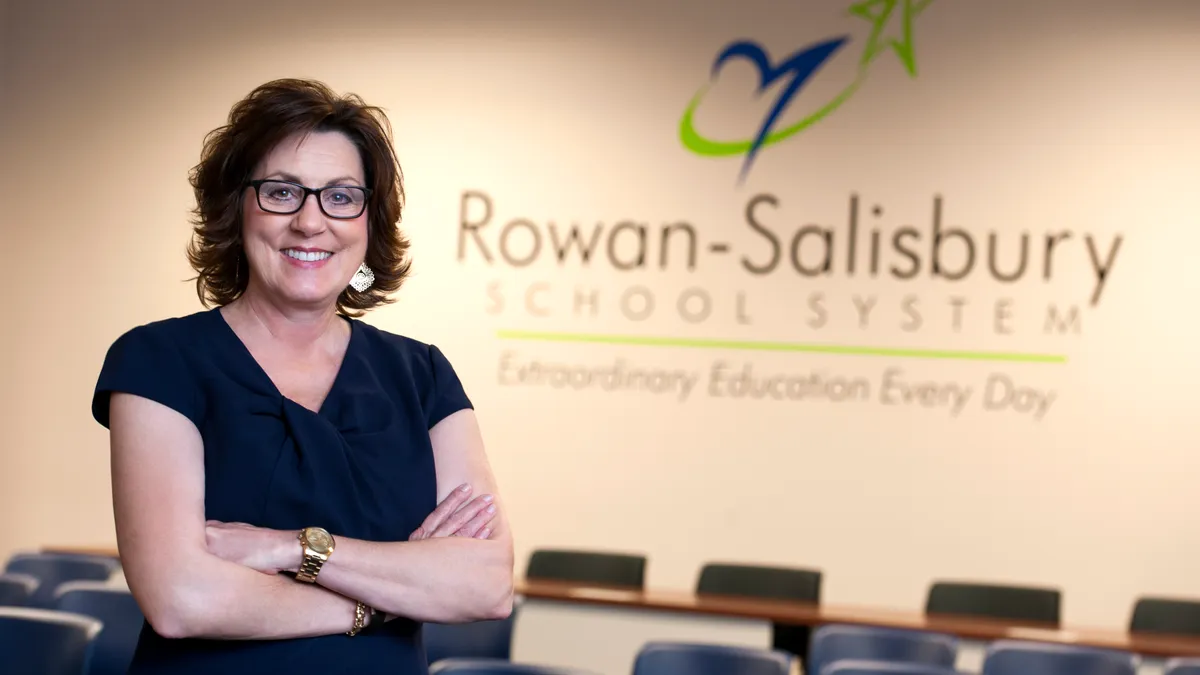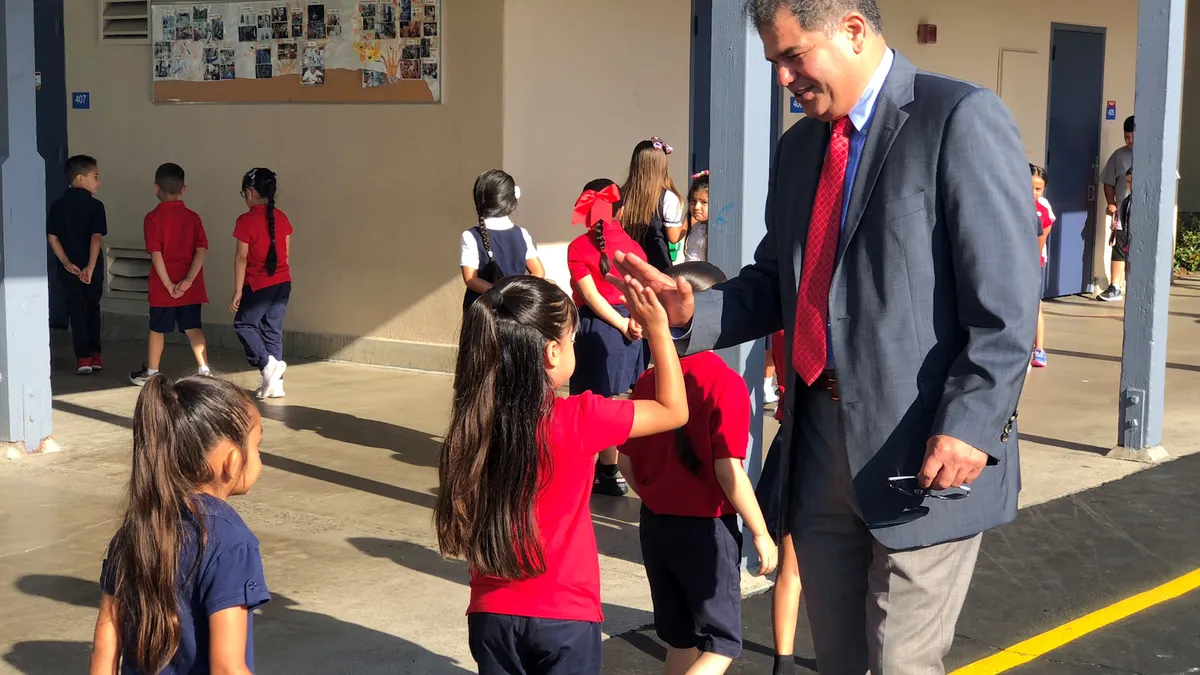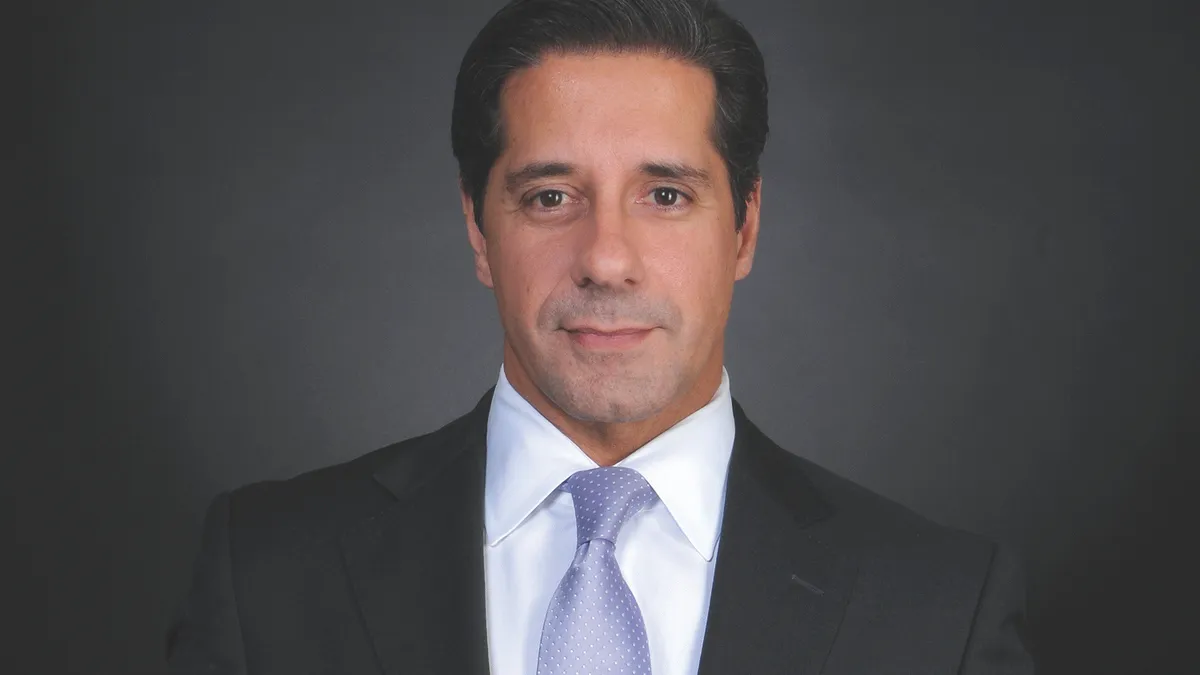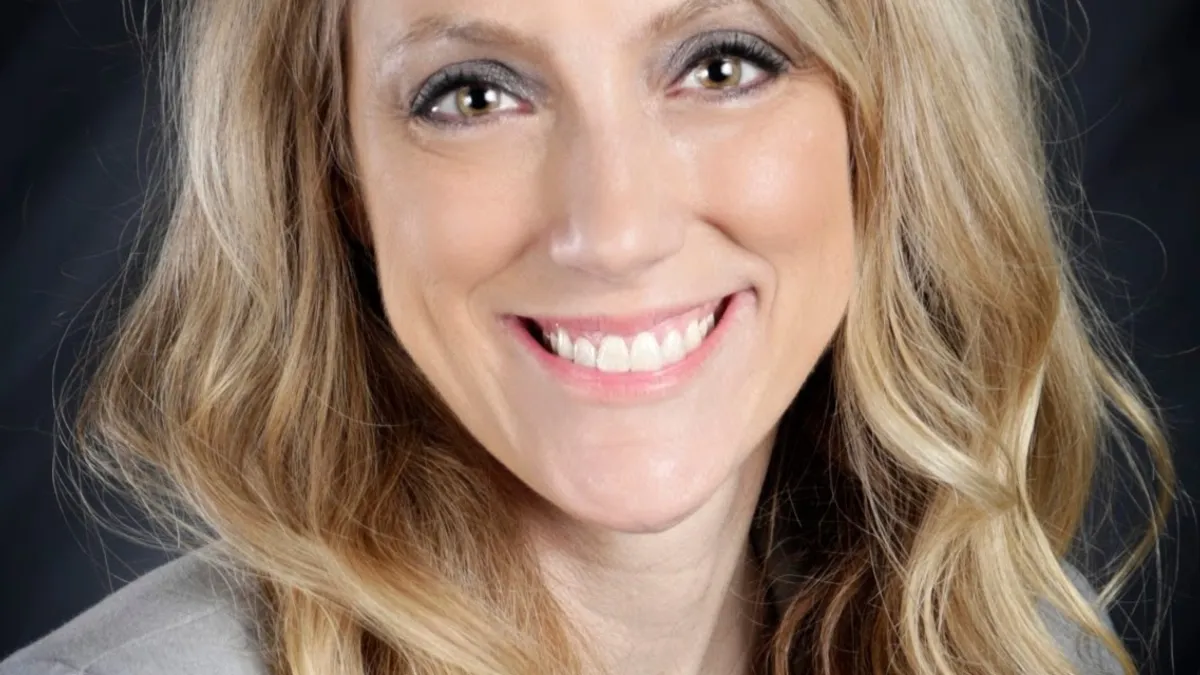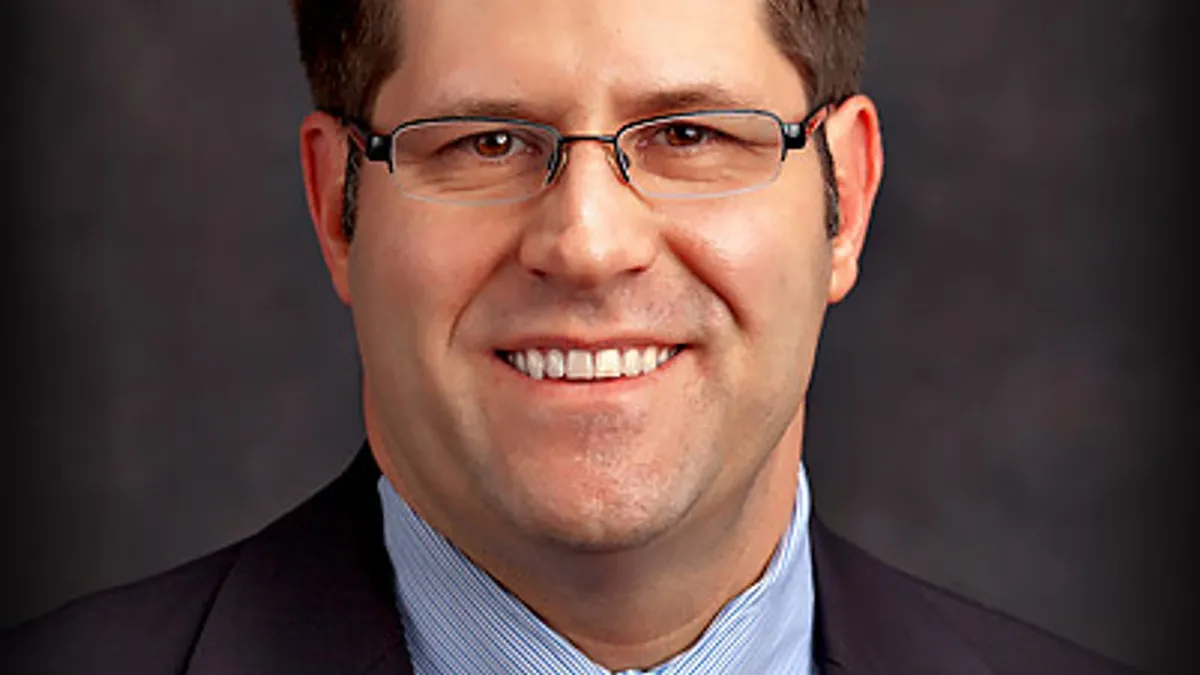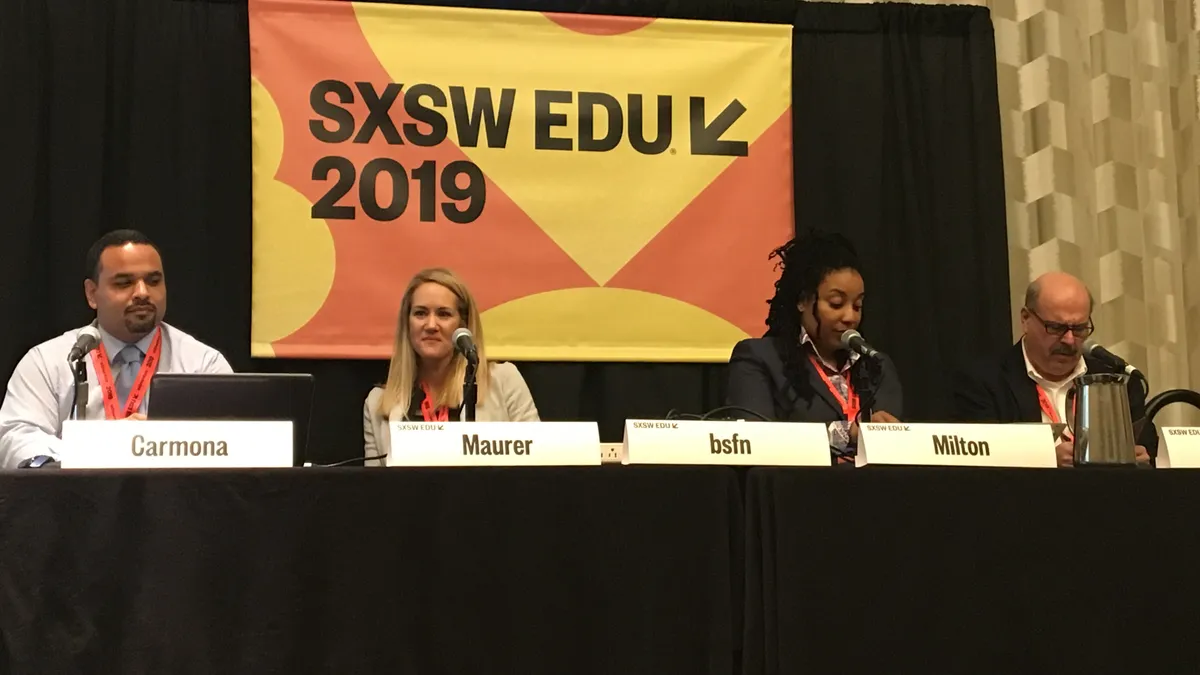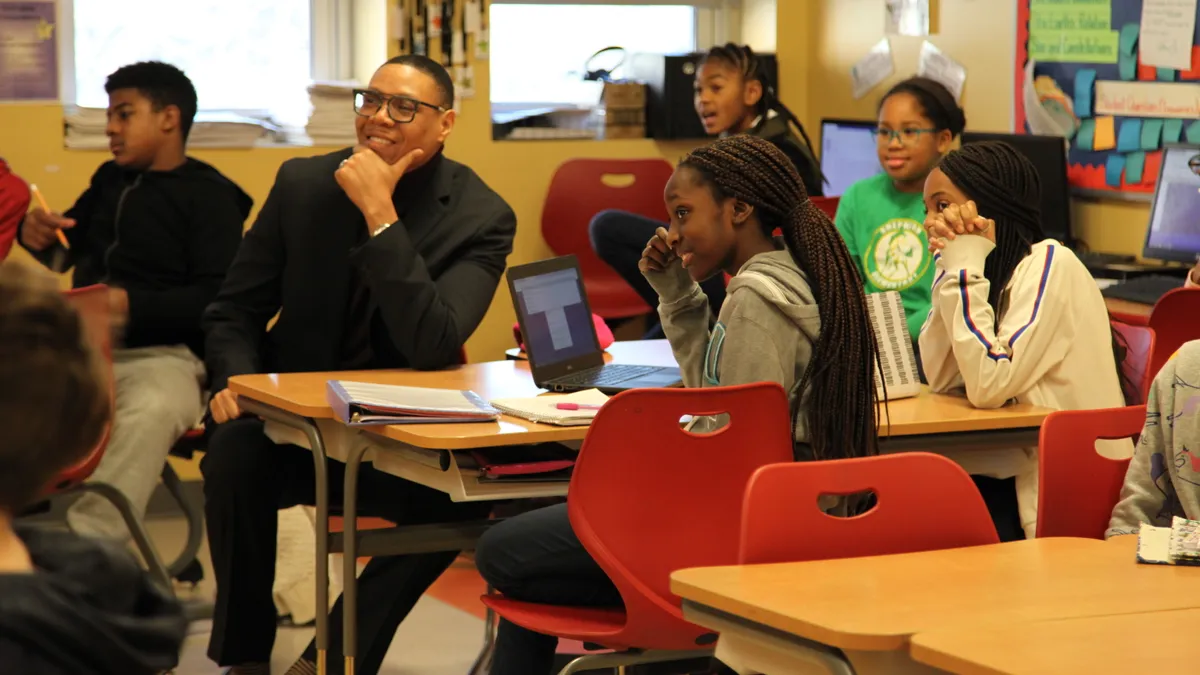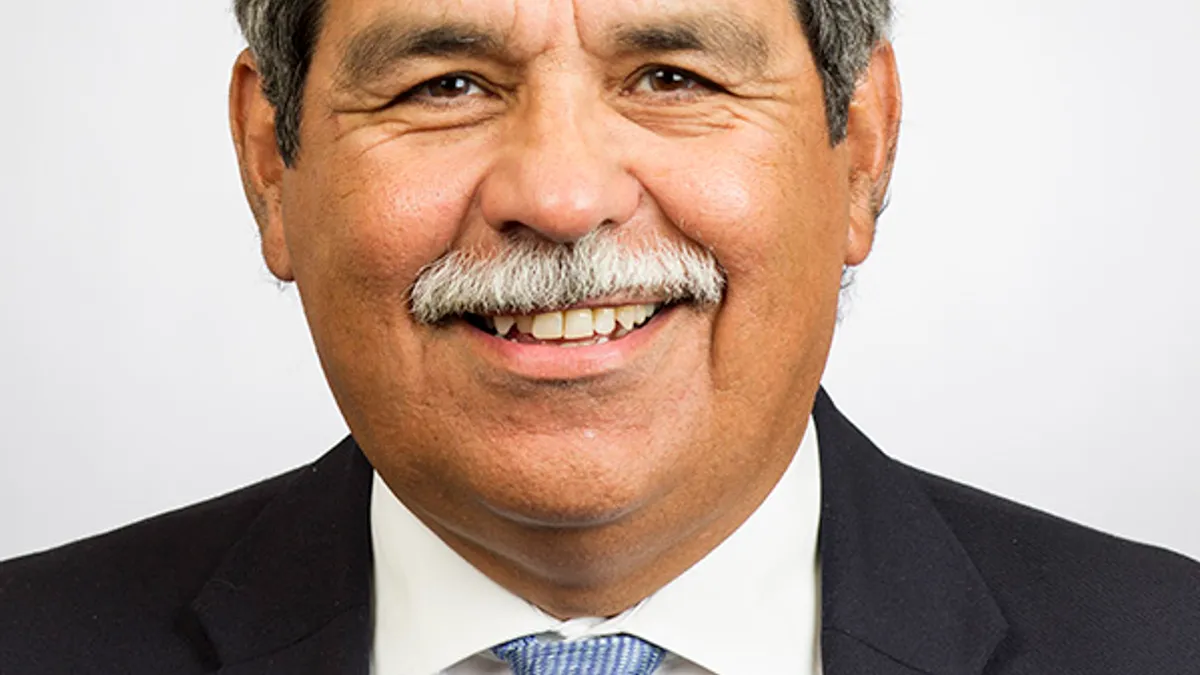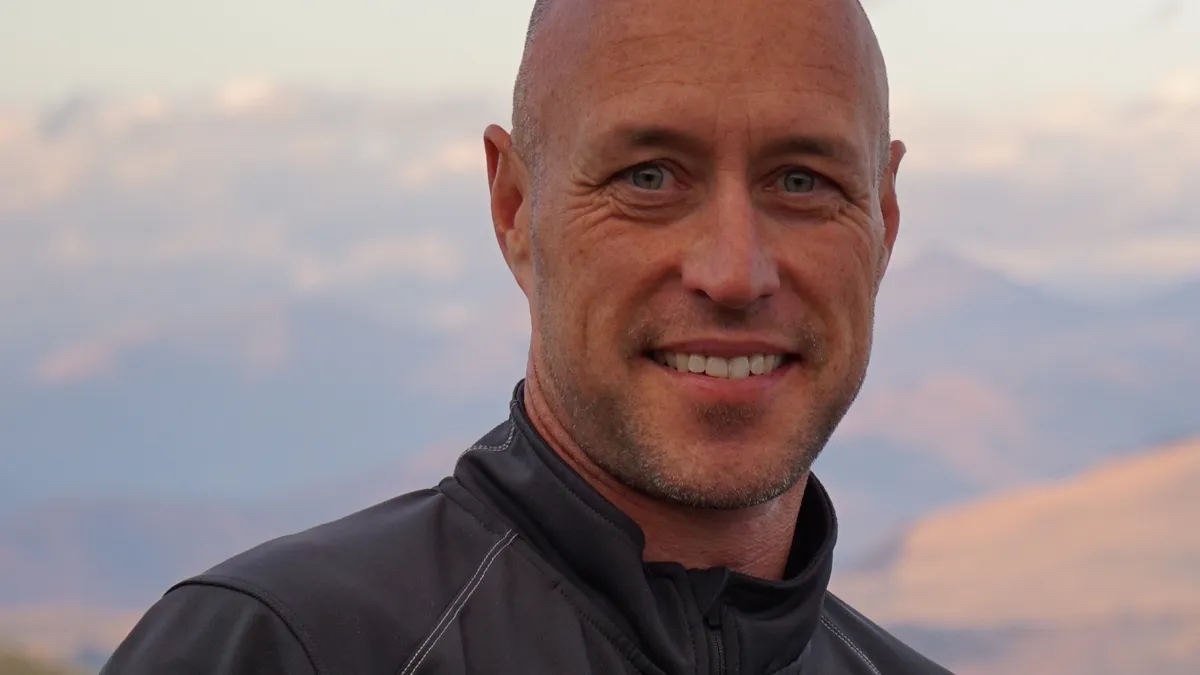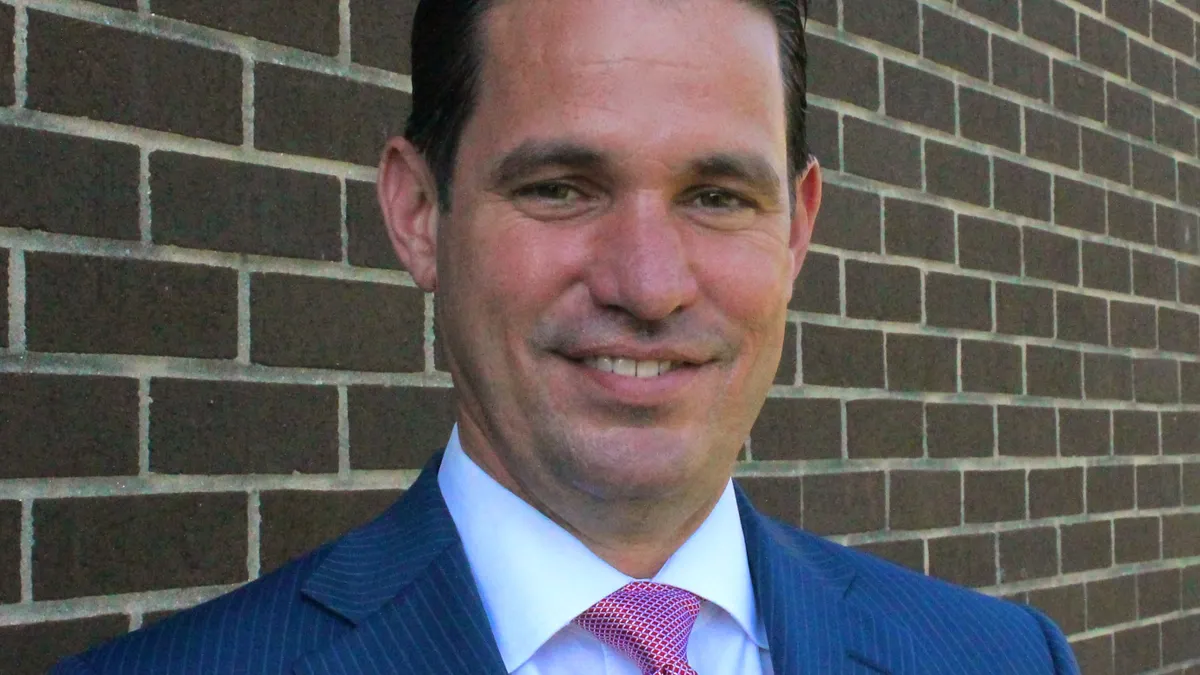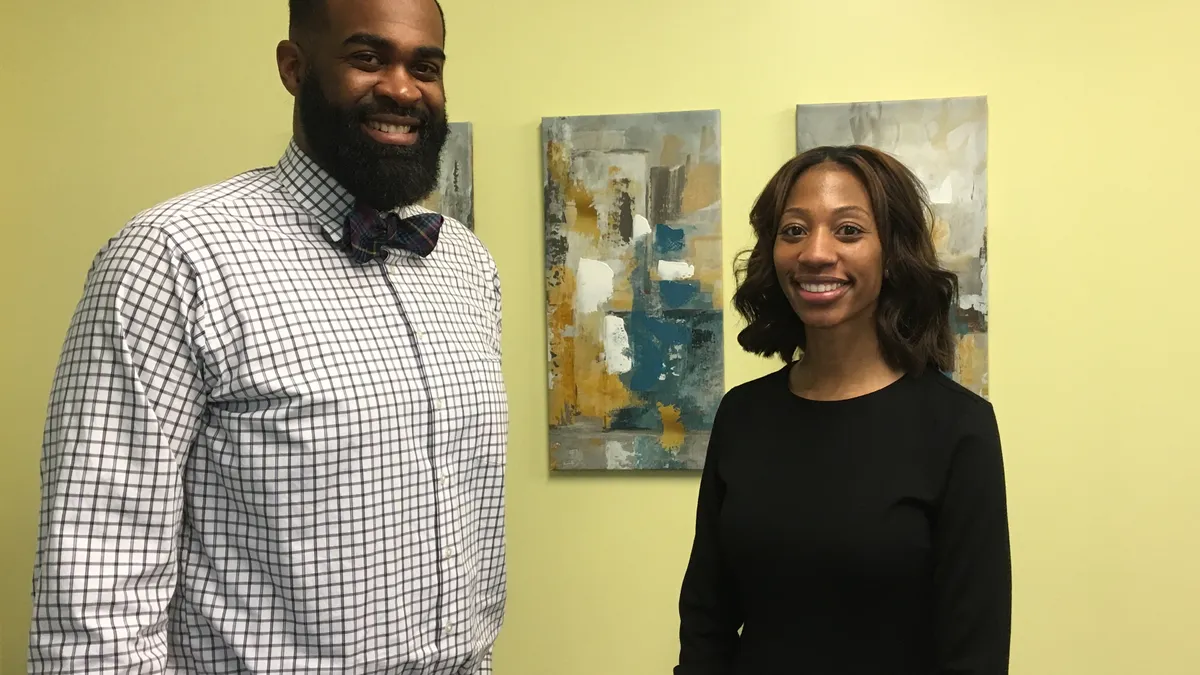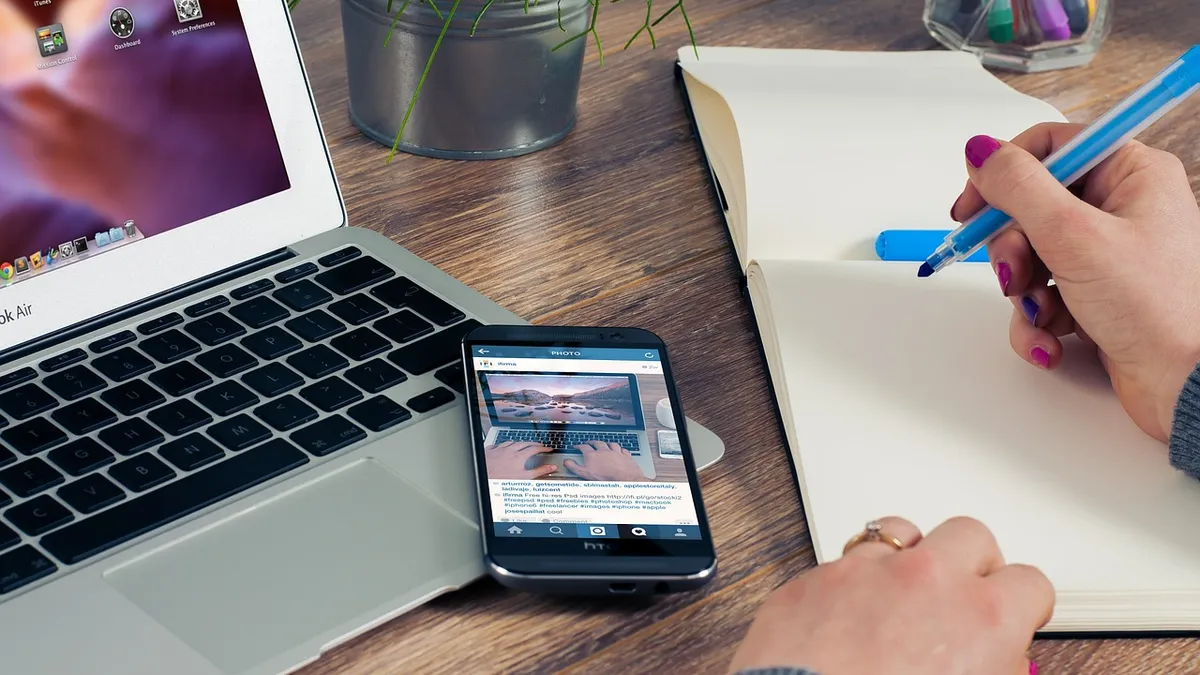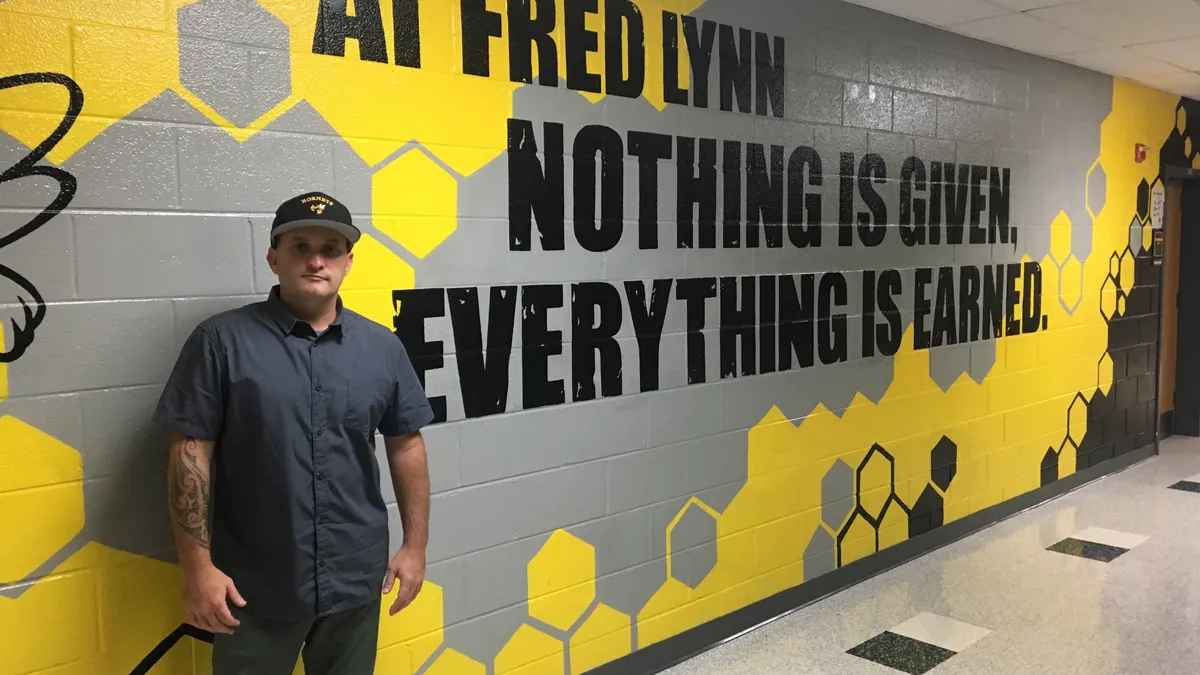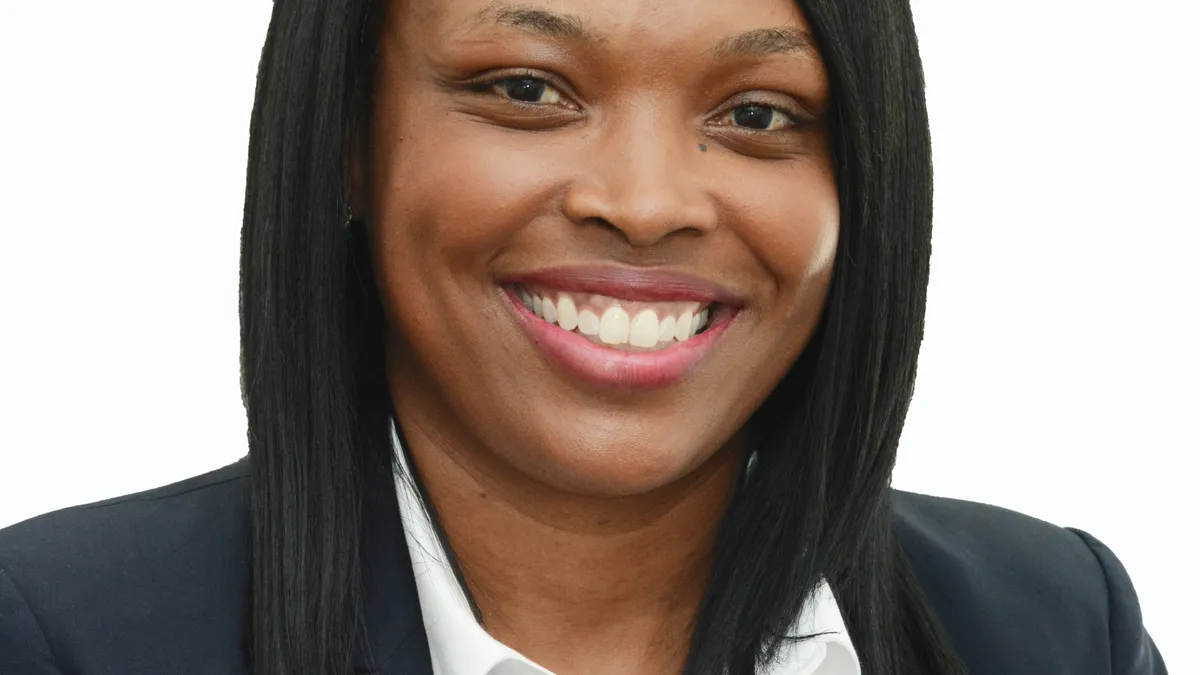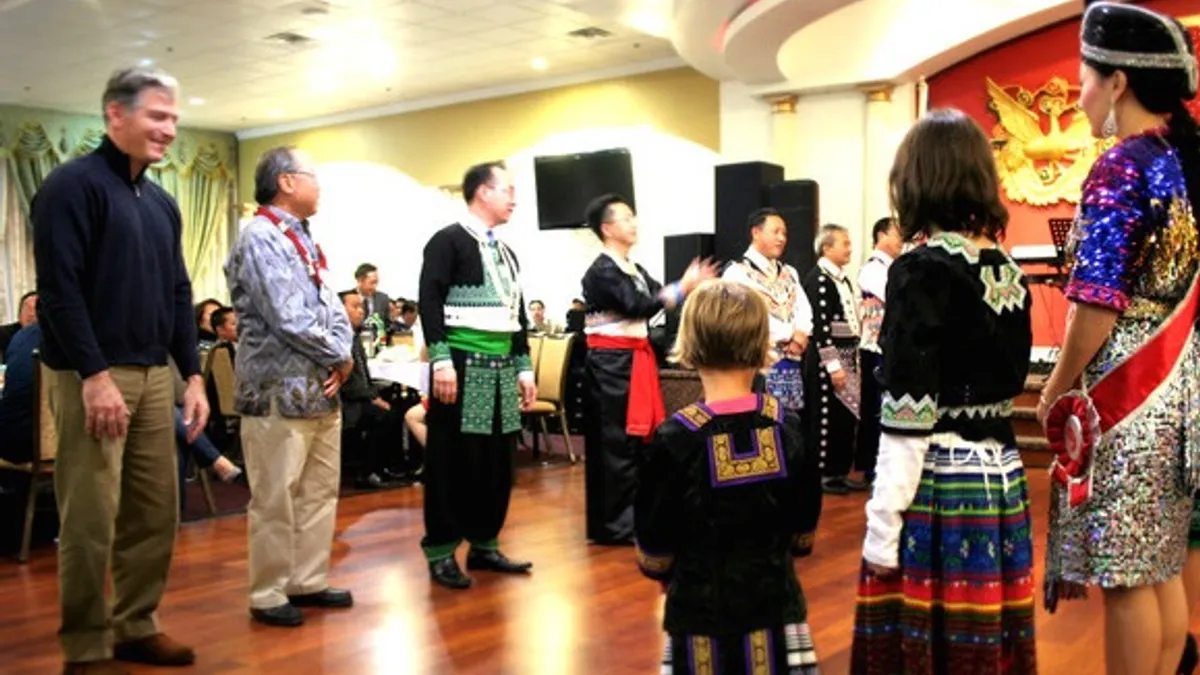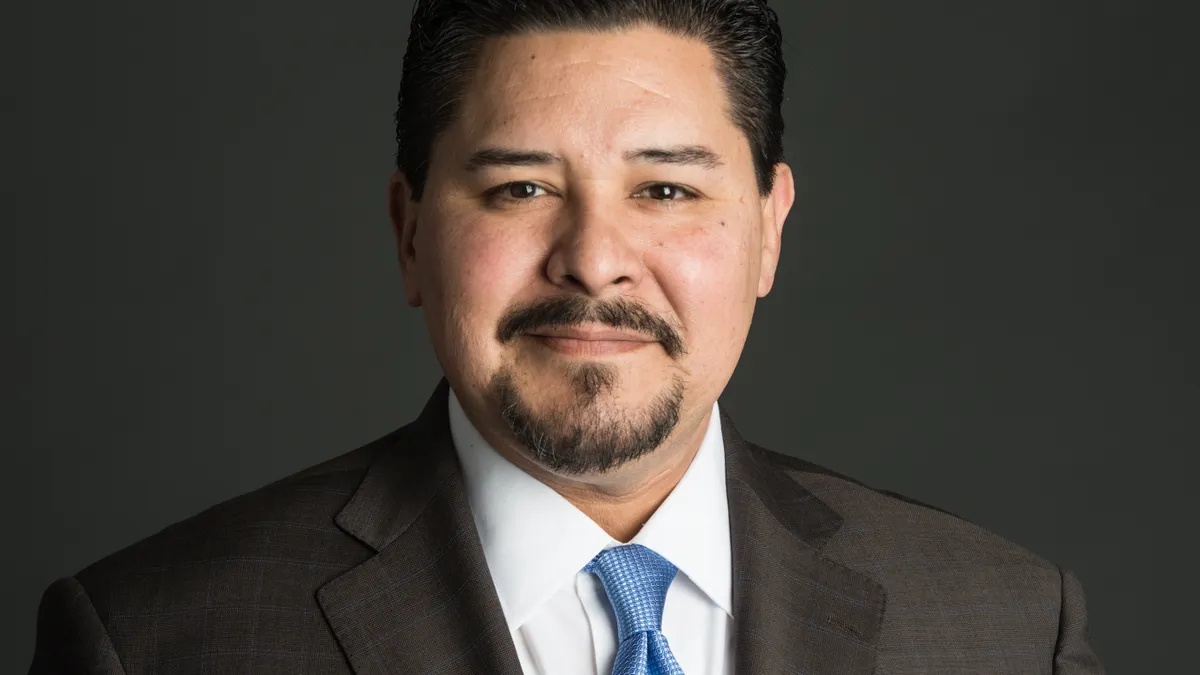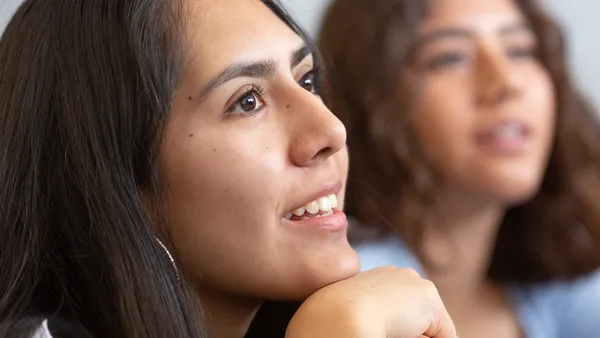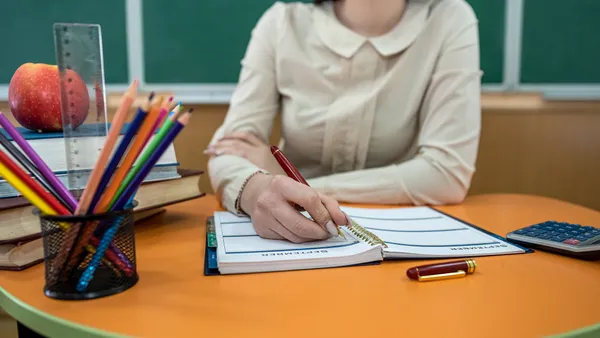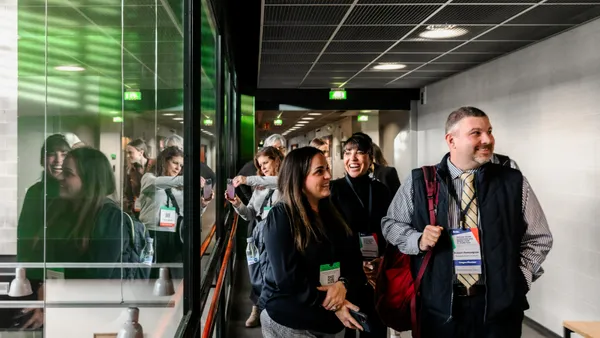Lessons In Leadership is an ongoing series in which K-12 principals and superintendents share their best practices and challenges overcome. For more installments, click here.
Almost a decade into her tenure as superintendent of Highline Public Schools in Burien, Washington, Susan Enfield guides her district's work not with a mission or vision statement, but with a promise. The Highline Promise, she recently told Education Dive, is to know every student by name, strength and need so they graduate prepared for the future they choose.
For Enfield — who began her career as a high school journalism, ELL and English teacher — the Highline Promise has become part of the district's DNA since it was first introduced in 2012.
"It is very clearly representative of our commitment to equity," she said, "because if we could say we knew every child in our public schools by name, by strengths and by need, and that they graduated prepared for whatever path they chose, that would be equity at scale."
Meeting that promise, however, is easier said than done even in the best of times. The district, which surrounds the Seattle-Tacoma International Airport, serves a diverse population of just over 19,000 students. Close to 70% are on free and reduced-price lunch, and around half speak a first language other than English, she said. Despite these circumstances, Highline still boasts a graduation rate of 83%.
We caught up with Enfield in late October to learn more about how the district delivers on its promise amid pandemic disruption, its efforts to build strong relationships with students, how it's bracing for potential budget cuts and more.
EDUCATION DIVE: This has been a year unlike any other before it, to say the least. When it comes to the Highline Promise, how do you still make sure you're delivering on that with the school model disrupted the way it is?
ENFIELD: That's a great question, and I think it speaks to one of the greatest leadership challenges that exists: Amid crisis, how do you identify and enact opportunities for change? Which is something we know we need to do, but is hard to do.
[We were] bearing that in mind in the spring, as we were preparing to engage in distance learning through the end of the last school year, knowing that we'd likely have to prepare for a hybrid or a distance learning model this year. We are currently in full distance learning. We may be bringing back some of our students with special needs in small groups in two weeks, and then potentially after that, elementary. But that decision has yet to be made.
So we had five planning teams working all spring and summer to prepare for the transition. And one of those planning teams was our whole child planning team. My charge to them was we have an opportunity to operationalize, at scale, our promise. And we’ve done it here in fits and starts over the last several years, but now we can really do something across the board at scale, because I think we have a mandate to. So we have developed a system, and we're calling it our 1:1 connections.
Every student in Highline has an adult from their school assigned to them. And that adult is checking in with that student on a daily, on a weekly basis — just building that relationship and checking in. “How are you? What do you need? What was a success for you this week? What was the challenge?” So nothing really formalized.
It's not solely about academics. It's really about building relationships and connections, because we know we can't leave that to chance in this distance learning model. We need to make sure each one of our students knows there are adults in the system committed to their success and to building relationships with them.
As a former high school teacher, I know because I've lived it. A student doesn't need a deep, meaningful relationship with every adult in their school. It just takes one. So if we can ensure we have an adult checking in with a child, and it's consistent and that relationship grows, I think we're going to go a long way in meeting our promise in a way we never have before the pandemic hit.
When it comes to assigning a student to a different adult in their school, is there a strategy that comes to determining which students are assigned to which adult?
We're leaving that up to the principal, because each school is different, and some schools already have a strategy like this. For them, it's just making sure they don't need to refine it in any way. But for some, it will be newer.
What we're encouraging principals to do is start with already existing relationships. It could be the student's classroom teacher, but in some cases, we also don't want to overload all of our teachers. And in many cases, our students have great relationships with someone who isn't their teacher. It could be a para-educator. It could be a coach. In some places, it could be the principal.
They're really dividing it up amongst where the natural relationships already are and where there seems to be a good match between an adult and a student. So that's really going to be school-specific, and they will be documenting those weekly contacts so we know they're happening, and also so we can sort of monitor any trends or patterns that we're seeing — not just in individual students, but in our students as a whole. Things we may need to be aware of so we can adjust what we're doing as a school system in the coming months.
Another source of stress for a lot of students, staff and faculty has been the ongoing civil rights demonstrations over the police-involved deaths of Black Americans. How has Highline navigated supporting students and staff experiencing stress or trauma from seeing these things in the news and in Seattle?
A lot of people talk about the fact we have dual pandemics. There's COVID-19, and then there's systemic racism. Given the fact that Highline has a decades-long commitment to equity work, that's codified in our equity policy and procedures.
Given our real focus over the last several years not just on equity — but on issues of race, equity and identity — this was not new to us. George Floyd, in particular, and Breonna Taylor definitely heightened the concerns that were already there.
We've made a commitment in Highline to diversify our staff. We want to hire the most diverse, highly qualified staff we can to work with our students.
We know from research, but more importantly from what our students tell us, that staff needs to be representative of our student body. The teaching profession in Washington state, and Highline included, is overwhelmingly white. But over the last five years, we've significantly increased by about 30-40% the teachers of color and leaders of color we have in our system.
That's great, but that's the easy part. What we were hearing from staff of color is you're bringing us into a system that was still set up not for us. So one of the things we were developing last spring and are actually launching this year is affinity groups. Any staff member can apply to create an affinity group. It's not district-created, it's staff-created.
And because we've heard from our staff of color that having time with people who understand their story and reality is important, but also that they feel that they are asked to do a lot of that work for free and on their own time, we are compensating our staff who participate in affinity groups. I think it's up to 90 minutes a month.
You will be compensated for participating in an affinity group that is not in any way regulated by the district. Obviously, if there are issues, we will deal with those. But our hope is the affinity groups will be part of a feedback loop to us as a system so we can figure out what we can do better for our students and staff of color.
Finally, we have an annual equity symposium that all staff participate in. This was our third annual, and obviously we had to do it virtually this year, but we made the focus of this year's equity symposium anti-racism and how we work to become, not just as individuals anti-racist, but as a system. Our school board has stepped up to really help lead that work.
We don't have all the answers, but what I say to people is that we are very honest about being deep in this very complex and necessary work.
With rhetoric from certain politicians and the White House adding even more polarization to these efforts, how do you navigate pushback from community members or parents on initiatives related to equity, anti-racism or even pandemic-related things?
As a district, we know we have to first and foremost be advocates for our children and families. We take that role very seriously. We've had some pushback on the fact that we support the Black Lives Matter movement and other things that are somewhat controversial. We have a set of talking points our communications team came up with, and we really bring it back to our policies and that we believe in supporting free speech and allowing people to address these issues very openly.
I will also say I think where you are located geographically in the country contributes greatly to your ability to tackle some of these issues head on. Being just outside Seattle, we’re in a pretty liberal/progressive/whatever way you want to name it part of the world.
We also have a very diverse and progressive board, so we aren't getting the same kind of pushback I know my colleagues in other parts of the country are getting. And I'm grateful for that, because it does allow us to do this work with more urgency and boldness than we'd be able to otherwise.
With budget cuts related to the pandemic expected in the next few years, how are you planning for that? And how do you navigate balancing everything when that does happen?
I would say there's a number of things. First of all, it's advocating at the state level — and federal level, if needed — for the funding we need. I'm on weekly calls with my regional superintendents and regularly with state leaders to talk about the realities we're facing around things like transportation funding. We have a very broken transportation funding model based on ridership. As you can figure out, that's highly problematic because we're not transporting students right now.
We're pushing on the state and our elected representatives on things like that. We already started doing some cuts at the central office level and are having a cabinet meeting in two weeks devoted to outlining what cuts we would be prepared to take depending on what the state ends up doing. The state forecast, actually, on a good news front, is looking slightly better than anticipated.
Who knows what will happen on changing the transportation funding model. Our enrollment is down, but not down as much as we had feared. I think financial hits will not be as crippling as we feared. That said, we're preparing for the worst, because that's the responsible stance to take. So we're looking at all areas where we can reduce costs while keeping people employed.
We understand losing a job right now is catastrophic — it always is, but especially right now for so many people. We've worked very hard not to have to do furloughs or layoffs, and I hope we can maintain that. But we will see what our reality is moving forward.



